- Show search

Virtual Field Trips
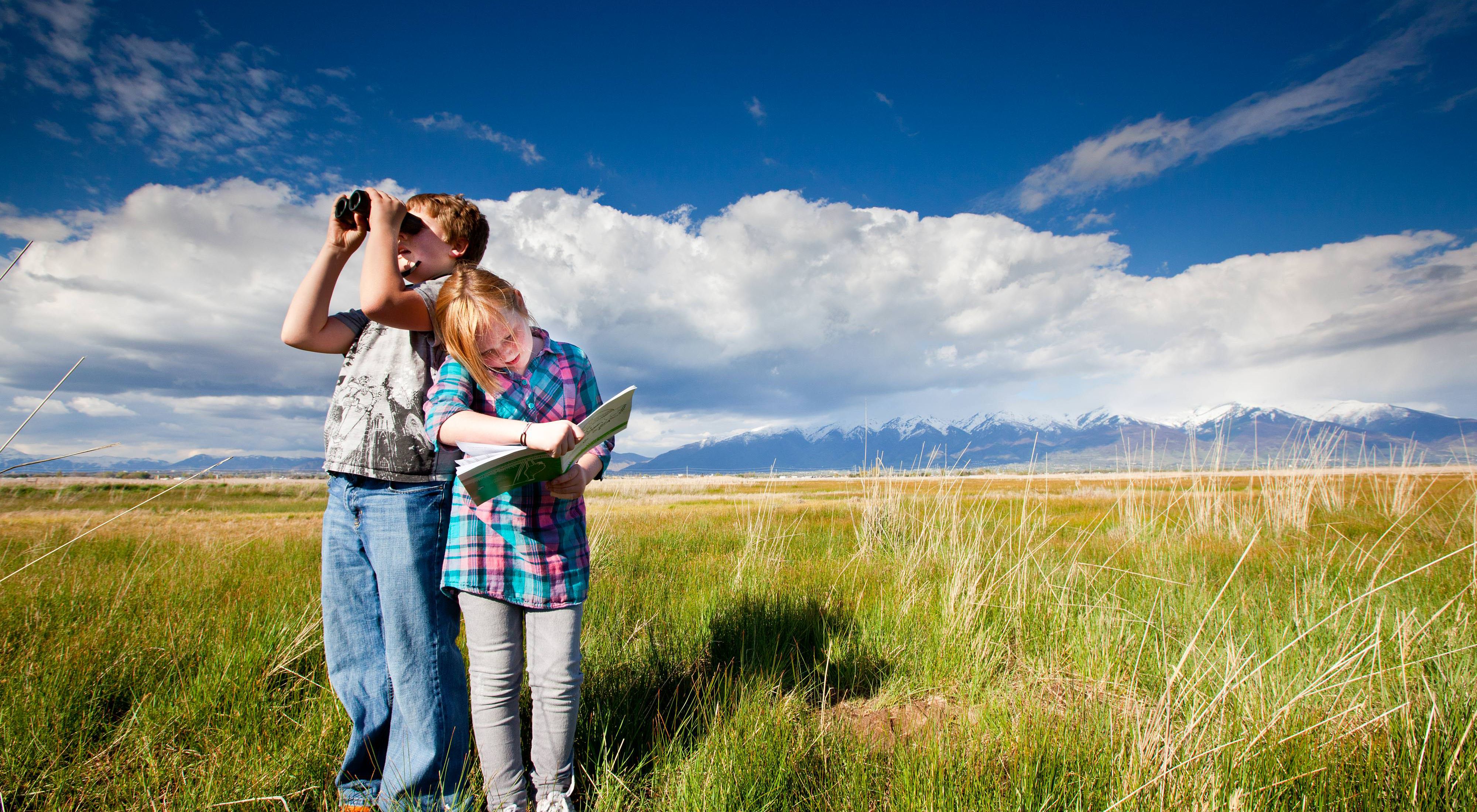
Explore the World with Virtual Field Trips
Designed for ages 9-15 but customizable for all ages, virtual field trips allow students to travel the world and explore natural environments without leaving the classroom. Each virtual field trip contains a video, teacher guide and student activities.
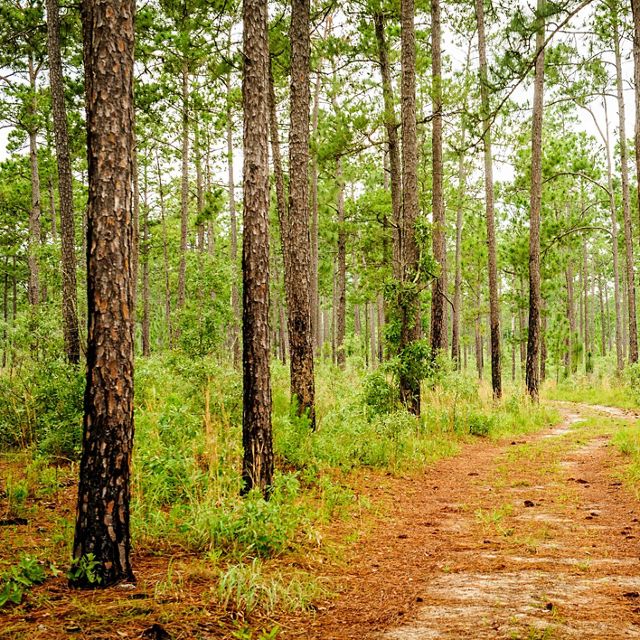
Working Trees: Reforestation and Responsible Forestry
Forests represent a powerful opportunity to pull carbon dioxide out of the atmosphere, helping to cool our planet while also providing clean air, clean water, and habitat for wildlife.
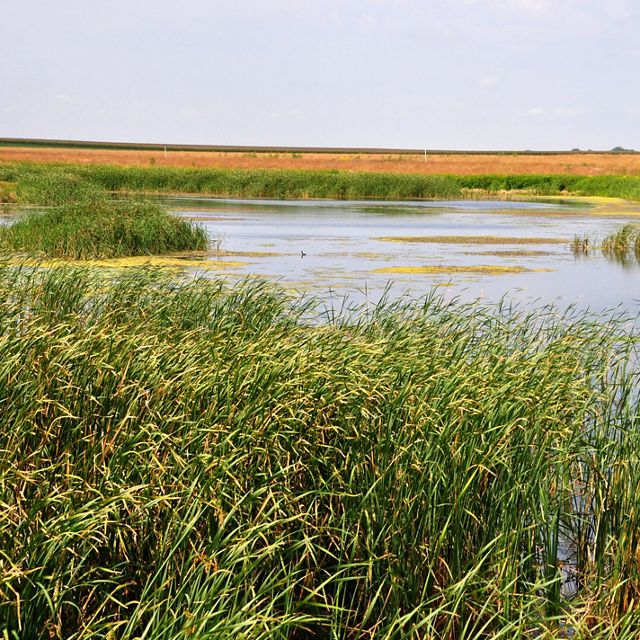
Less Harm on the Farm: Regenerative Agriculture
Food is more than something we eat to survive; it's a part of how we thrive. Learn how regenerative agriculture can help us feed a growing population while restoring nature.
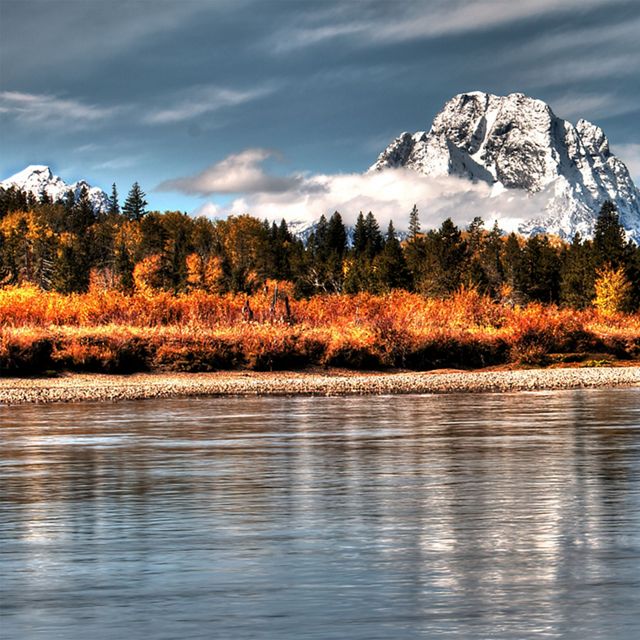
Climb-It Change
Explore how climate change is impacting alpine ecosystems and go on a climbing adventure with scientists who take you to some of the most stunning mountain ranges in the United States. This film is a Rocket Soul Studios production.
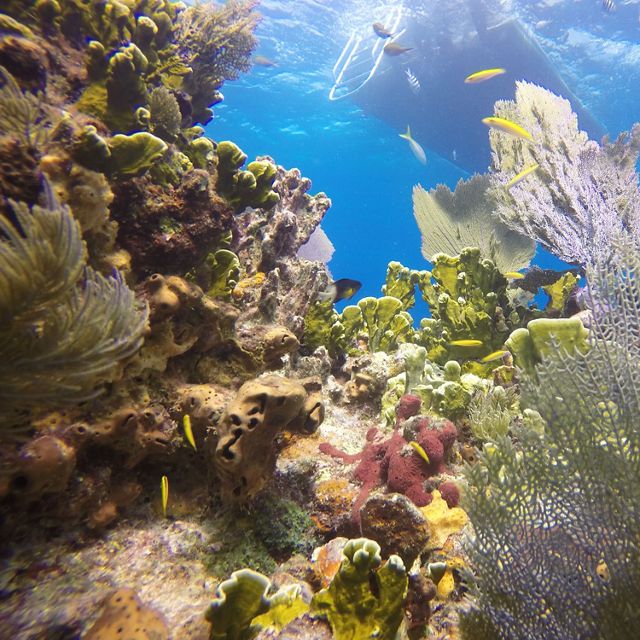
Protecting Our Oceans and Ourselves
More people rely on our ocean for food, energy, transport, recreation and other natural resources than any other time in history.
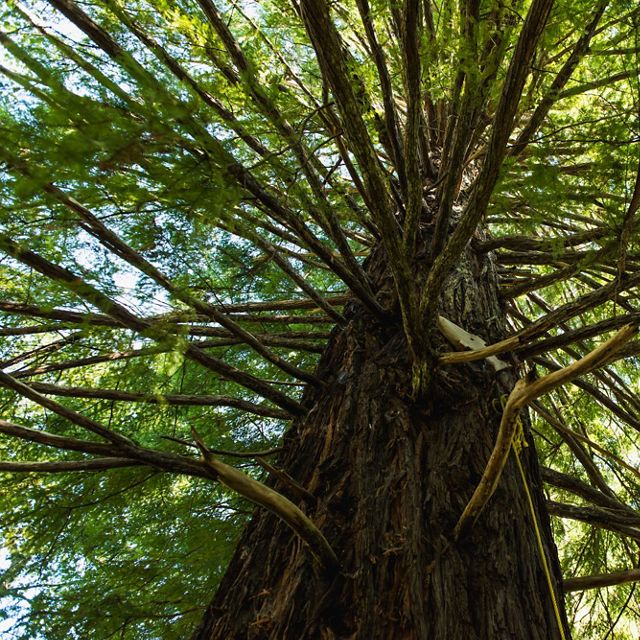
Climate Heroes: The Power of Trees
Trees are our climate superheroes! From Louisville, Kentucky, in the United States to St. Vincent and the Grenadines in the Caribbean, trees are playing critical roles in cleaning our air and improving our resilience in the face of climate change.

You’re the Scientist! Citizen Science, Frogs and Cicadas
The conservation community relies heavily on volunteers not only to restore natural areas but to help gauge the success of restoration efforts.

Changing Climate, Changing Cities
Get a front-row, ground-level seat to the challenges cities face as they confront this force of nature, and discover the solutions experts are promoting to mitigate it.
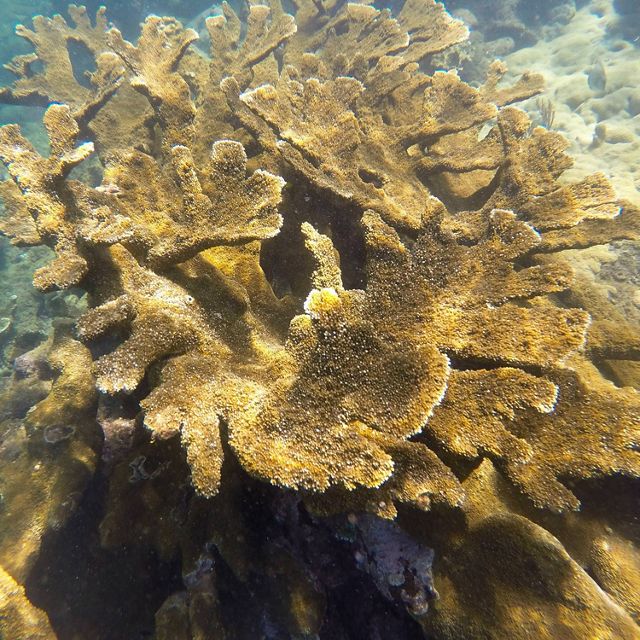
The Secret Life of Corals
Learn how fragile reefs are being damaged by human activity and climate change, and how scientists are developing ways to restore corals.
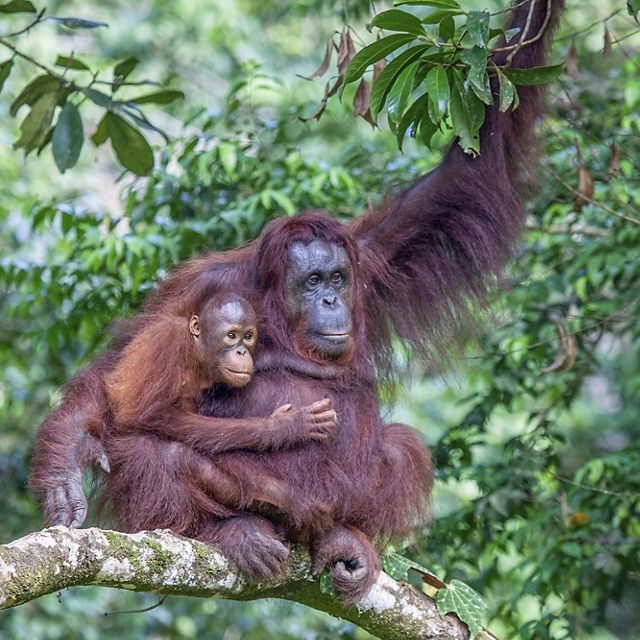
Borneo: The Symphony of the Rainforest
On this journey, we’ll learn how experts are using cutting-edge science to find out how healthy the rainforest is—and to discover where it needs some help!
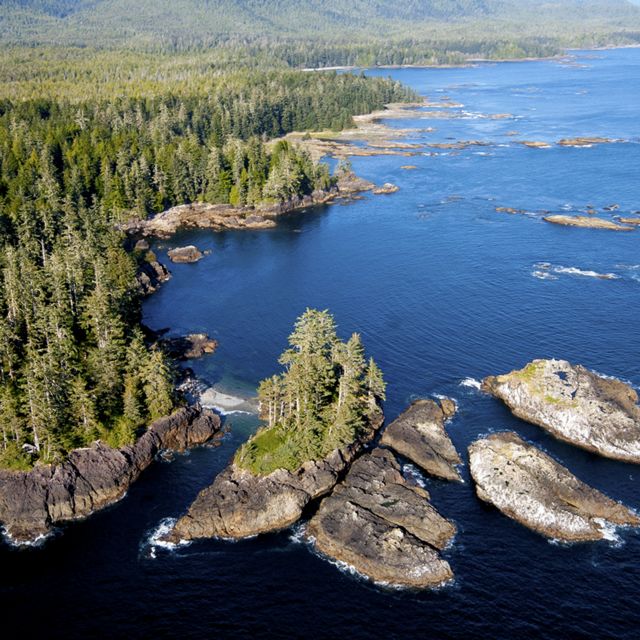
View from a Canoe
Can you imagine a place with 100 million acres of forest and 30,000 miles of coastline? It exists. The Emerald Edge is home to the largest intact coastal temperate rainforest.
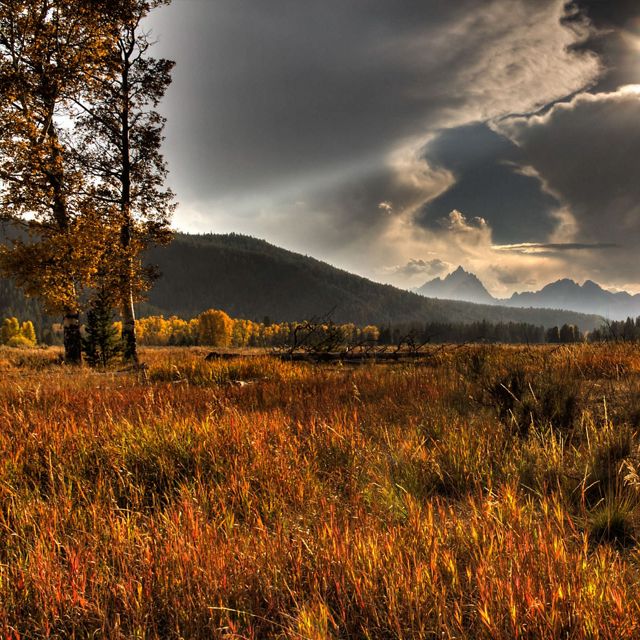
Wild Biomes: America’s Rainforests & Deserts
Two wildly different ecosystems, both dependent on the same precious resource: Water. On this virtual field trip, we’ll travel to Seattle and Arizona.

The Coral Reefs of Palau
Join our expert scientist, marine biologist Stephanie Wear, on a virtual field trip to the coral reefs of Palau where you'll explore amazing underwater cities.
.jpg?crop=669%2C0%2C2662%2C2662&wid=640&hei=640&scl=4.159375)
China’s Great Forests
Join our expert scientist Yue Wang, a conservation planning officer for The Nature Conservancy, on a virtual field trip across the world to two stunning provinces in China.

Powering the Planet: Renewable Energy
Join scientist Alex Wegmann as we embark on a Virtual Field Trip to explore a compelling question: How can we get the energy we need without harming nature?
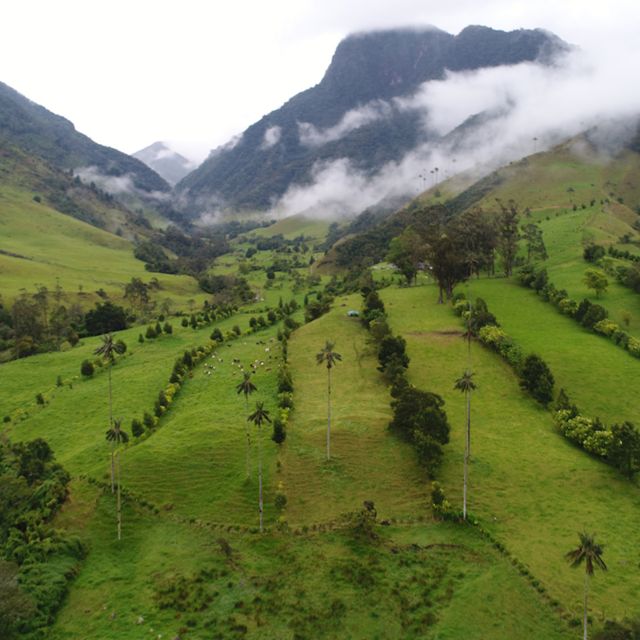
Journey of Water: Colombia’s Páramo
In this virtual field trip, we will explore the magical páramo ecosystem and the stunning mountain landscapes found just beyond the capital city of Bogotá.
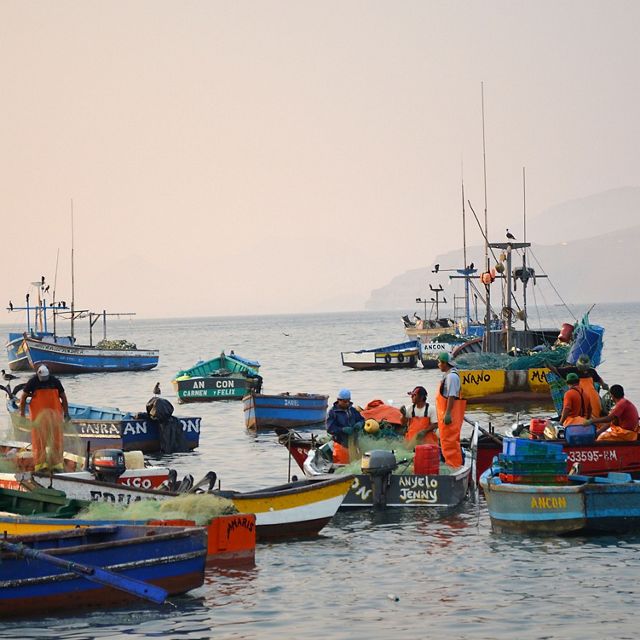
Peru: A Coastal Ecosystem
Join fisheries scientist Matias Caillaux to explore the Humboldt Current Ecosystem off the coast of Peru while learning about the area’s amazing diversity and productivity.
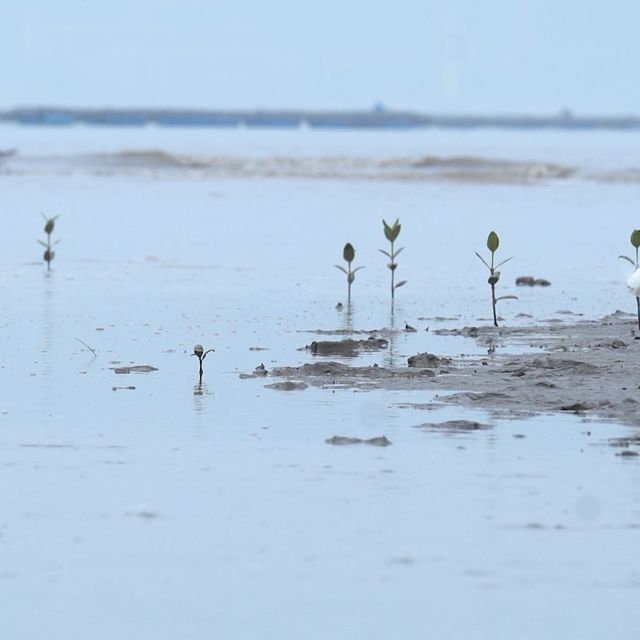
Ridge to Reef: A Virtual Field Trip to Hong Kong
The “Ridge to Reef” (R2R) concept is a holistic approach that takes into consideration all the environments within a watershed — from the top of the mountains down to the ocean — and shows that what happens on land affects what happens in the water.
Stay connected for the latest resources from Nature Lab
Don't miss new Nature Lab teaching guides and videos. Sign up to get the monthly Nature Lab newsletter with free environmental education materials for educators and families.
Explore Our Youth Curriculum
Access resources aligned to The Nature Conservancy’s research and designed specifically for a young audience and classroom use.
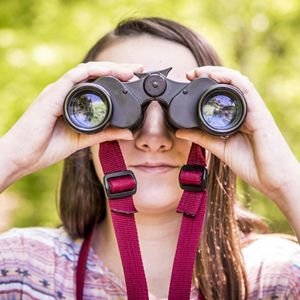

Virtual Field Trips
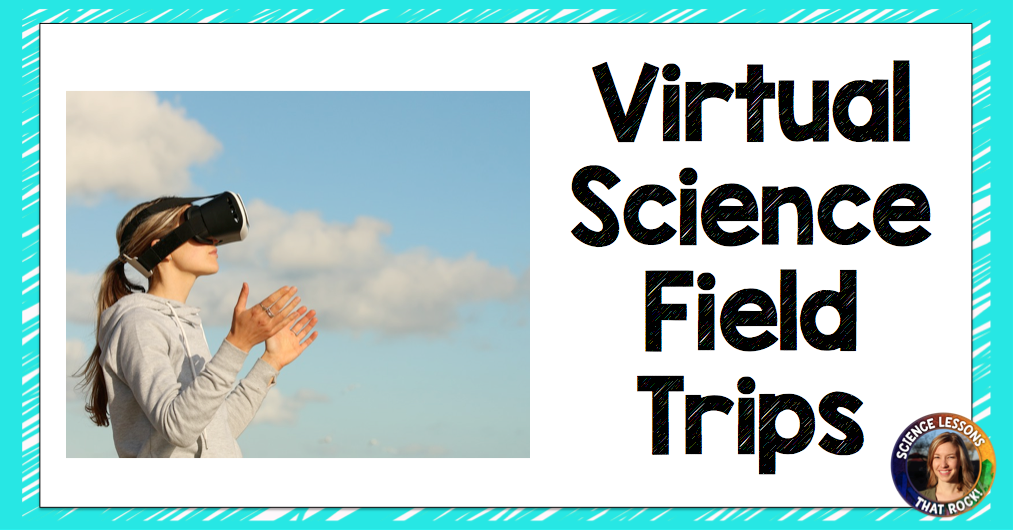
1. Virtual Field Trips.org is a great place to start. They have videos that can take students to the galapgos, national parks, and the amazon. Head here to watch!
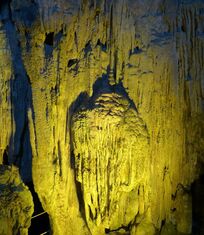
11. The Smithsonian has a virtual tour of their “deep time” exhibit . A great place to check out extinct fossils!

- Read more about: Field Trips , Media in the Classroom , Technology
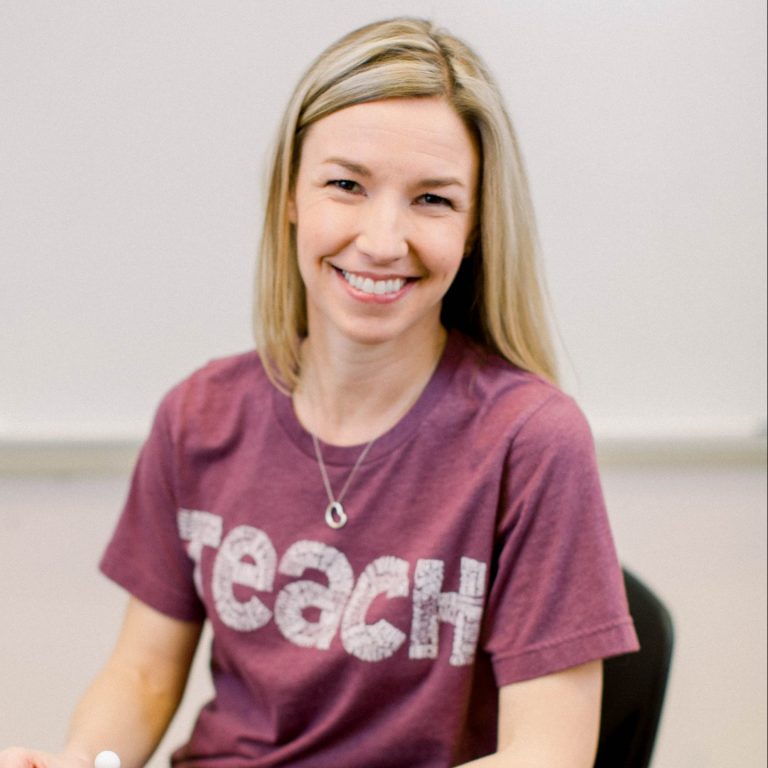
Hi, I'm Becca!
Search the site, browse by category.
- A list of ALL blog posts
- Back to School
- Biochemistry
- Body Systems
- Classification
- Classroom Decor
- Classroom Management
- Distance Learning
- End of the School Year
- Experiments
- Field Trips
- For NEW Teachers
- Formative Assessment
- Media in the Classroom
- Microscopes
- Photosynthesis & Respiration
- Plate Tectonics
- Sustainability
- Teacher Tips
- Weather and Climate
Get Freebies!
You might also like....

Science Seek and Finds

Layers of the Earth Lessons

Teaching the Electromagnetic Spectrum

Let me help your students with experimental design!

Privacy Overview

- Integrations & Access
- Content Partners
- Science Techbook
- Mystery Science
- Pivot Interactives
- DreamBox Math
- DreamBox Reading Park
- DreamBox Reading Plus
- Social Studies Techbook
- Augmented Reality
- Professional Learning
- Career Connect
- Research & Impact
- Success Stories
- Leadership Blog
- Courageous Leaders
- Communications Resources
- Discovery Educator Network (DEN)
Virtual Field Trips
- Educator Blog
- Puzzlemaker
- Back-to-School Readiness
- Career & Technical Education
- Teacher Retention
- Supporting Literacy
- Education Funding
- About Corporate Partnerships
- Our Corporate Partnerships
- Join our Network
- STEM Careers Coalition
No permission slips required! These virtual events let educators take students to amazing places and give them remarkable experiences, without ever leaving the classroom.
Featured and upcoming virtual field trips.
Join us for our Virtual Field Trips or watch them on-demand after their premieres. Each no-cost Virtual Field Trip comes with a companion guide packed with standards-aligned, hands-on learning activities! Select one of the options below to register.
On-Demand Virtual Field Trips
Discovery education & the nba: a slam dunk partnership, “innovators for impact” virtual field trip with olympian katie ledecky and panasonic, bridge to the future: a virtual field trip into extended reality, arctic adventures: polar bears at play virtual field trip, the science & behavior of safe driving: it takes all of us virtual field trip, an ounce of prevention virtual field trip, the courage to act: forming a chain of resistance.
WE ENGAGE COMMUNITIES ON A LEARNING JOURNEY IN HISTORY AND SCIENCE
Virtual Hands-On Science Field Trips
For reservations, call 810-237-3409.
Whether you’re teaching remotely or in the classroom, we can virtually present interactive science content to your kids. Activity kits include all the materials for fun, hands-on exploration that aligns with state standards.
⭐ Virtual Field Trips for Classroom Learning: Programs marked with a gold star are available as virtual experiences for in-person learners in their classrooms.
🟢 Virtual Field Trips for Remote Learning: Programs marked with a green circle are available as virtual at-home experiences for remote learners.

Grades Pre-K & K What’s the weather like? Design a weather report folder to use for observing and describing the weather. Students will see how weather affects our daily lives while drawing clothes on their weather bears. NGSS: K-ESS2.D

Grade K Students will build their own terrarium to take home while investigating living and non-living things. NGSS: K-LS1-1, K-ESS3-1, K-ESS3-3, 1-LS1-1

⭐🟢 Moon Phases
Grade 1 Make a glow in the dark moon phase book that will help kids explore the predictable pattern of the shapes of the moon we can see on Earth. NGSS: 1-ESS1-1

Grades 1-3 What makes sound? Students will find out as they investigate vibrations, pitch and loudness with fun hands-on activities. NGSS: 1-PS4-1, 1-PS4-4

⭐ Build Your Own Ecosystem
Grades 1-6 Investigate ecosystems and the water cycle, and learn what living things need to survive. Students will build an independent ecosystem to take home. NGSS: 1-LS1-1, 2-LS2-1, 4-LS1-1, 5-LS1-1

⭐🟢 Landforms
Grades 2-3 Explore Earth! Students will use clay to sculpt mountains, valleys, plains, plateaus, and other major landforms. Investigate where on earth these landforms can be found and what forces help shape our world. Discover the many different landforms that are located in our very own state of Michigan! GLCE: E.SE.02.21, 3-G1.0.1, 3-G1.0.2

⭐ Fossil Science
Grade 3 Make a plaster fossil model to take home and touch real fossils, while learning how fossils are formed and how they provide evidence of life long ago. NGSS: 3-L24.A

⭐🟢 Build-A-Buggy Challenge
Grade 3 Students will investigate how the shape of a vehicle affects its ability to move through the air. Design and build an aerodynamic buggy and then use a ramp and fan to see how far the buggy can travel. NGSS: 3-PS2-1, 3-PS2-2

⭐ Amusement Park Science
Grades 3-5 Students will explore forces and motion, while re-creating some of their favorite amusement park rides. Find out why you don't fall out when a ride goes upside down. Investigate contact and non-contact forces, while designing a tabletop marble roller coaster. NGSS: 3-PS2.A

⭐🟢 Moon Phases & Eclipses
Grades 4-6 Students will make a glow-in-the-dark moon phase book and an eclipse project while exploring the motion of the Earth and Moon. NGSS: 5-ESS1.B

Plan Your Virtual Field Trip!
Virtual Field Trip Logistics & Reservations Virtual History & Social Studies Programs Virtual Storybook STEM for Early Learners
Call 810-237-3409 to book your virtual field trip!
Your ticket for the: hands-on science virtual field trips, hands-on science virtual field trips.

Suggested Searches
- Climate Change
- Expedition 64
- Mars perseverance
- SpaceX Crew-2
- International Space Station
- View All Topics A-Z
Humans in Space
Earth & climate, the solar system, the universe, aeronautics, learning resources, news & events.

NASA, Global Astronomers Await Rare Nova Explosion

NASA Scientists Take to the Seas to Study Air Quality

NASA to Change How It Points Hubble Space Telescope
- Search All NASA Missions
- A to Z List of Missions
- Upcoming Launches and Landings
- Spaceships and Rockets
- Communicating with Missions
- James Webb Space Telescope
- Hubble Space Telescope
- Why Go to Space
- Commercial Space
- Destinations
- Living in Space
- Explore Earth Science
- Earth, Our Planet
- Earth Science in Action
- Earth Multimedia
- Earth Science Researchers
- Pluto & Dwarf Planets
- Asteroids, Comets & Meteors
- The Kuiper Belt
- The Oort Cloud
- Skywatching
- The Search for Life in the Universe
- Black Holes
- The Big Bang
- Dark Energy & Dark Matter
- Earth Science
- Planetary Science
- Astrophysics & Space Science
- The Sun & Heliophysics
- Biological & Physical Sciences
- Lunar Science
- Citizen Science
- Astromaterials
- Aeronautics Research
- Human Space Travel Research
- Science in the Air
- NASA Aircraft
- Flight Innovation
- Supersonic Flight
- Air Traffic Solutions
- Green Aviation Tech
- Drones & You
- Technology Transfer & Spinoffs
- Space Travel Technology
- Technology Living in Space
- Manufacturing and Materials
- Science Instruments
- For Kids and Students
- For Educators
- For Colleges and Universities
- For Professionals
- Science for Everyone
- Requests for Exhibits, Artifacts, or Speakers
- STEM Engagement at NASA
- NASA's Impacts
- Centers and Facilities
- Directorates
- Organizations
- People of NASA
- Internships
- Our History
- Doing Business with NASA
- Get Involved
- Aeronáutica
- Ciencias Terrestres
- Sistema Solar
- All NASA News
- Video Series on NASA+
- Newsletters
- Social Media
- Media Resources
- Upcoming Launches & Landings
- Virtual Events
- Sounds and Ringtones
- Interactives
- STEM Multimedia

Amendment 19: D.18 Euclid General Investigator Program: Names must be omitted from References.

PACE Celebrates National Ocean Month With Colorful Views of the Planet

Hubble Examines a Barred Spiral’s Light

NASA Astronauts Practice Next Giant Leap for Artemis

Former Astronaut David R. Scott

Space Station Research Advances NASA’s Plans to Explore the Moon, Mars

NASA Mission Flies Over Arctic to Study Sea Ice Melt Causes

Webb Finds Plethora of Carbon Molecules Around Young Star

Solid State Quantum Magnetometers—Seeking out water worlds from the quantum world

C.12 Planetary Instrument Concepts for the Advancement of Solar System Observations POC Change

The Big Event, 2025

Black Hole Week

Amendment 20: F.20 MOSAICS Seed Funding formerly SMD Bridge Program Seed Funding Final Text.

ARMD Solicitations

Winners Announced in Gateways to Blue Skies Aeronautics Competition

NASA, Industry to Start Designing More Sustainable Jet Engine Core

B.10 Heliophysics Flight Opportunities Studies Correction

Tech Today: Measuring the Buzz, Hum, and Rattle

Artemis Generation Shines During NASA’s 2024 Lunabotics Challenge

NASA Marshall Engineer Receives AIAA Honors Award

Meet the Simunauts: Ohio State Students to Test Space Food Solutions for NASA

Diez maneras en que los estudiantes pueden prepararse para ser astronautas

Astronauta de la NASA Marcos Berríos

Resultados científicos revolucionarios en la estación espacial de 2023
Infiniscope Virtual Field Trips
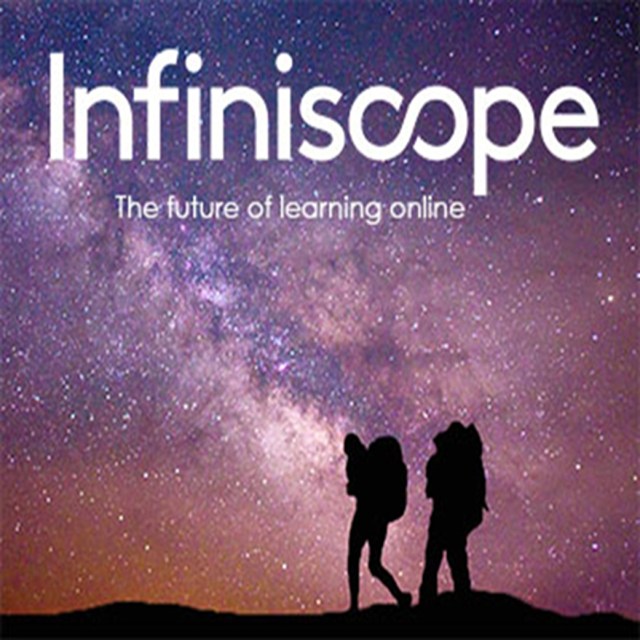
Grade Levels
Grades 5-8, Grades 9-12
Earth Science, Physical Science, Space Science
Interactive Multimedia
Whether you are exploring Mars, investigating the extinction of the dinosaurs or are curious about the origins of life on Earth, Infiniscope’s virtual field trips bring the wonder of Earth and space science to you. Try the different field trips and interactive games to learn more about Earth and space.
This activity is brought to you by a partnership with NASA and the Arizona State University Center for Education Through eXploration through NASA’s Science Activation program.

ROBOTLAB BLOG
Everything you need to know about robotics in education and businesses.

8 virtual field trips for STEM engagement
BY LAURA ASCIONE
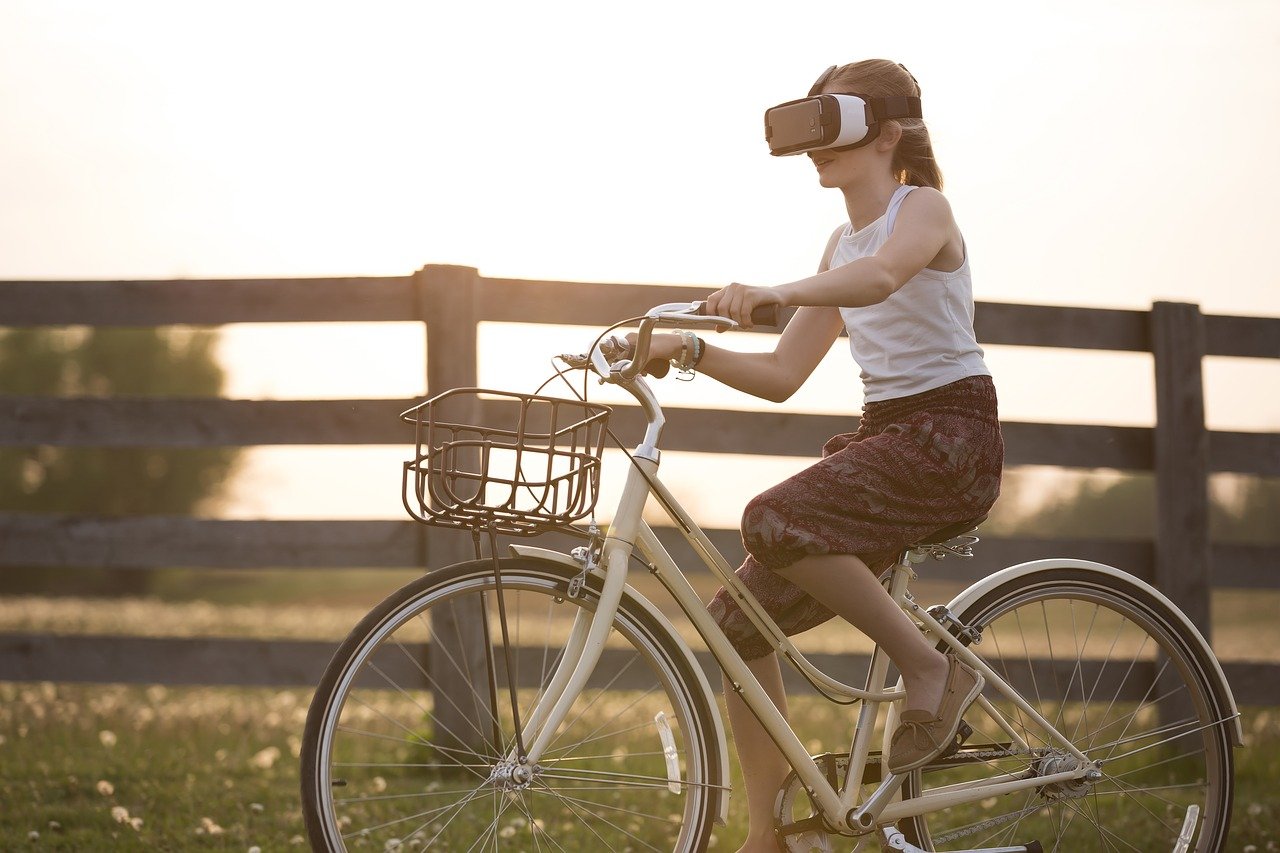
In-person field trips aren't possible during the pandemic, but virtual field trips offer fun learning experiences for students
Hands-on STEM subjects are challenging to teach when students aren’t in the classroom all the time, and student engagement is also a challenge during COVID. Virtual field trips address both of these persistent roadblocks.
Virtual field trips can help students get a front-row look at STEM outside of the classroom. Where can those engineering concepts you learn during school take you in adulthood? Is it possible to be creative in a STEM career?
Here are some virtual field trips highlighting STEM careers and experiences:
1. Slime in Space : What happens when you send Nickelodeon slime to the International Space Station? That’s exactly what a group of NASA astronauts set out to answer, and we want you and your kids to come along for the ride! This free 15-minute virtual field trip will take kids 250 miles above earth to see how slime, and water, react in a microgravity environment. It’s truly out of this world!
2. Innovation Generation : Transport students beyond the walls of the classroom and into a Stanley Black & Decker Makerspace where making and doing is a way of life! Inspire your students to be agents of innovation. Working alongside the experts of the Stanley Black & Decker Makerspace, students will see and experience first-hand how math, science, technology, creativity and teamwork can lead to technological advancements in our everyday lives.
3. Internet of Things: Infinite Possibilities Virtual Field Trip : The Internet of Things refers to a collection of computing devices – such as smart speakers, thermostats and sensors –which are connected to a network to allow for an improved real-time data to better manage two of the most critical resources to humanity: energy and water. Students will get an exciting look at how the internet they use in their everyday lives can be used to conserve natural resources, protect ecosystems, and create safer, more sustainable communities.
4. ecoAction Virtual Field Trip : We’re traveling to Seattle to see how Boeing is incorporating sustainable practices and innovations as they pertain to sustainable air travel, natural resource preservation, water quality control, and waste management. Follow along to learn some easy ways you and your community can be sustainable, too!
5. Girls Get Stem – Unleash Your Inner Scientist : Have your classroom join us as we experience a brand-new kind of camp – it’s not just swimming, sun, and s’mores – but STEM! Tune in to transport students to the STEM Center of Excellence where STEM will come to life in new and unexpected ways.
6. Gray, Green, Blue: Water Security and YOU! : People, businesses and industries, recreation, waste removal, transport, nature, and even lawn care all require water. Making sure there’s enough reliable, clean water for the health and livelihoods of people and natural environments is what we mean by water security, and it is one of the biggest challenges we face. Learn how nature can play a role in ensuring water security and what YOU can do to help!
7. The National Museum of Computing : The museum has virtually opened its doors for anyone to visit and take a tour of the world’s largest collection of working historic computers. Wherever you live, you can now journey through the history of modern computing from its very beginnings to the present day–from the comfort of a PC or device. You can stroll through our new, virtual experience–unguided or with one of the museum’s experts for a live, virtual tour where you will gain first-hand insight and knowledge about the 50,000 artifacts in the museum’s unique collection.
8. Museum of Science Virtual Field Trips : Students can talk with experts, observe leafcutter ants in action, discover the science behind Pixar Animation Studios, explore and identify animal skills, and more.
Discover more virtual field trips with RobotLAB!

- Feb 1, 2021 8:00:00 AM
- Posted by Natalia Galvis
- Topics: Math , Math Book , EdTech , STEM , Curriculum , teachers , students , Technology , Mathematics , Edchat , Gendergap , Digital Technology , teaching , online , lessons
Relevant Posts
Popular posts, subscribe to email updates, additional information.
© 2024 ROBOTLAB Inc. ALL RIGHTS RESERVED
*If you have questions related to how we use your data, please refer to our privacy policy link
- Our Mission
6 Free Resources for Virtual Field Trips
Teachers can use panoramic photos and videos of locations all around the world to make lessons more engaging.

How can you take students around the world without moving very far? If you haven’t yet, it’s worth trying virtual field trips and excursions. Now more than ever, these resources allow students to experience spaces they might not otherwise get to see, and there are many ways to introduce them to students as they explore a topic.
Virtual field trips can help students explore a new space, build vocabulary and background knowledge, and expand their world view. Whether you want to explore the setting of a novel, introduce a place-based math problem, or make connections to current events, virtual field trips can expand upon traditional lessons in many ways. One of the reasons I love them so much is that they allow students to view a space that piques their curiosity and provides context for their learning.
The term virtual field trip can be used to describe not just 360 degree photos and videos but also the live interactions and video conferences you might set up with a subject matter expert like an author or museum docent. Flipgrid (one of my favorite tools) hosts a handful of these types of virtual field trips .
6 Ways to Set Up Virtual Field Trips
The list of free virtual field trip resources here is adapted from my ISTE Live presentation in December 2020. Students can access these resources without logging into a new website—teachers can post the link to a 360 degree panoramic image or interactive experience in a platform students already use, making it easy for them to access in both traditional classroom settings and at home.
1. AirPano : This site includes 360 degree videos and images from around the world. You aren’t required to create an account—you can just jump in and start searching. When you’re ready to share with students, there is a link you can copy and paste or an embed option if you’re adding a widget to a site of resources. If you’re looking for international locations, AirPano is a great choice for exploring outdoor spaces, including Machu Picchu in the daytime, or the northern lights at night.
2. Google Maps Treks : In combination with Google Maps and Earth, Treks organizes content in an easy-to-navigate way. There are Treks for places around the globe, including the U.S. and Canada, Egypt, Nepal, and India. Each one has information and videos for students to explore.
3. National Geographic : National Geographic’s YouTube channel transports students all over the world to learn about different cultures, foods, animals, and more. Have students press play on the video, and as the video begins, they can use their cursor or trackpad to spin the video in different directions. They can tap on one part of the screen to move the video back and forth as they learn about a new place.
4. Nearpod : Known as an interactive presentation tool, Nearpod has virtual reality content built into its platform in the form of 360 degree panoramic views, which can be used as a great pre-reading strategy to introduce a new book or spark discussion about a social studies or science topic. To use these interactive experiences with your students, insert them into any Nearpod lesson in the same way you would add a slide or poll. (Please note: Nearpod also offers a paid plan with additional amenities.)
5. 360Cities : This collection of stock 360 degree images has lots of user-uploaded resources. There is a special school version that allows you to introduce students to more dynamic learning experiences; it has features such as a guided tour creator.
6. Google Arts and Culture : This tool has a variety of high-quality content, including interactive views that let students walk through notable spaces such as museums and explore examples of beautiful architecture like the Alhambra in Spain. You can let students know that this resource is mobile-responsive in addition to working on a web browser—they can access the content on a smartphone or tablet, or their Chromebook or laptop.
Engaging Students With Guided Questions
Set a purpose for students as they explore these resources by using prompts to guide their excursions. Potential prompts include:
- What do you think the weather is like in this place?
- How do you think someone captured this moment?
- What might be missing from this shot?
I’ve put together more prompts here .
If building student vocabulary is a primary goal of introducing virtual field trips to your students, you can point out different objects in the panoramic views or ask students to find certain features. For example, imagine students are learning about geological features and you take them on a virtual field trip to Hawaiʻi Volcanoes National Park. Together you can discuss vocabulary like crater , steam vent , and igneous rocks .
When sharing with students, include a prompt or question and post the link and task into a space they already have access to, such as Google Classroom, Seesaw, or Schoology. If you’re sharing a list of resources for students, colleagues, or families that includes some of these virtual excursions, you might curate a list of favorites using a tool like Google Sites, Spark Page, or Microsoft Sway.

Virtual Field Trips Designed For Your Curriculum
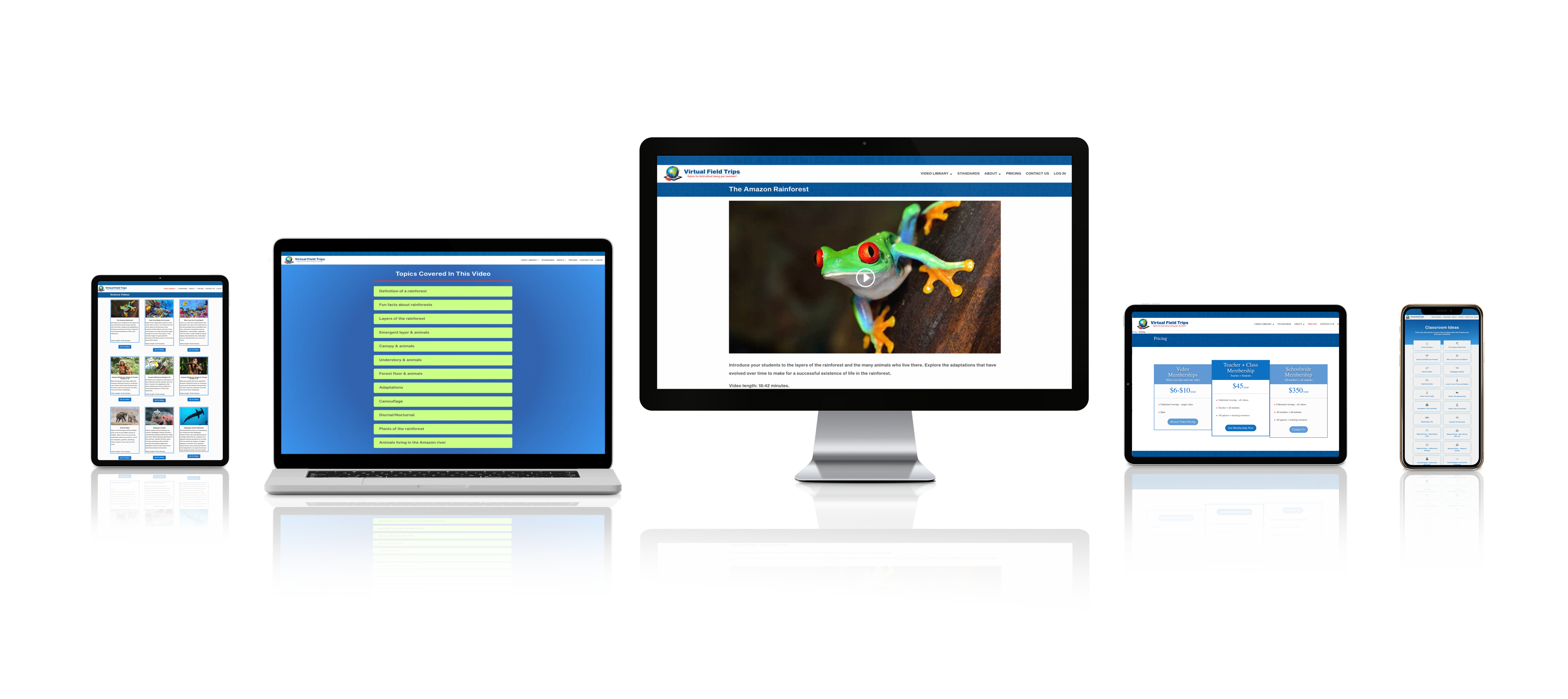
Quizzes + Worksheets

Online Activities
Take your students around the globe, or around the block, and open their eyes to the majestic and magnificent world around them, what we have to offer.
50+ videos created by educators for educators.
K-9 curriculum alignment.
Social studies, life science, and geography content.
Habitats and ancient civilizations.
Quizzes, worksheets and printables.
Online learning activites.
Video links for remote learning – no student logins.
Mobile-friendly website. Use any device.
Well-researched and professionally narrated videos.
Video length from 5-35 minutes long.
Foreign language videos.
Unlimited viewing.

Video Links for Remote Learning

We have video sharing links for remote learning! Copy and paste our links into your favorite digital platform. Just click and play – no student logins needed!
What’s new.

300+ Classroom Ideas!
Looking for inspiration? We’ve put together a huge collection of fun and educational classroom ideas to inspire you and your students! Games, activities, writing topics, art projects, worksheets and so much more….
Our Facebook Group
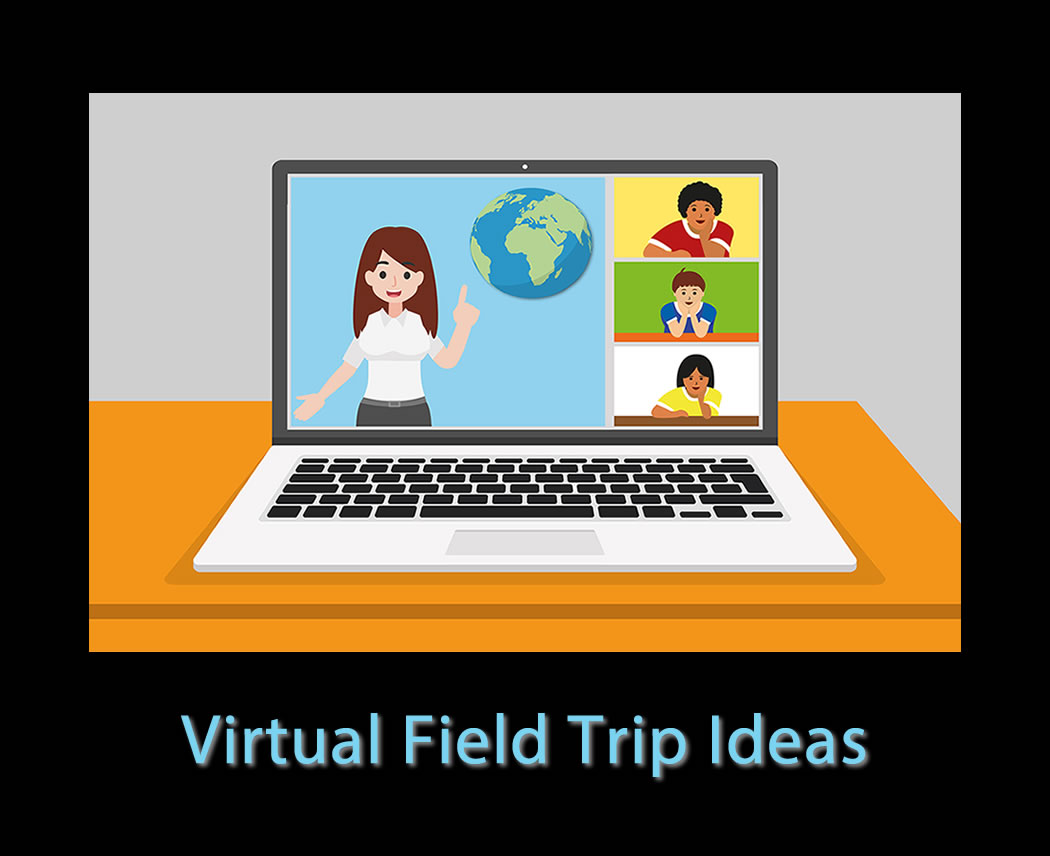
What You Can Expect
Video content that is aligned with your curriculum.
More time added to your day.
A budget-friendly resource.
An incredibly easy way to incorporate technology into your classroom.
A resource that supports independent learning.
A classroom resource that will help shape students into global citizens.
Increased learning outcomes for certain groups of students.
A classroom resource that uses best practices for e-learning.
A 21st century learning tool for 21st century students.
An easy way to take your students to places they may not ever get to visit.
What Our Customers Have To Say
5th Grade Teacher , Hawaii
“ I took my students on a Virtual Trip to the Amazon today! They told me this field trip was much better than the one we went on from Discovery Education!!! “
3rd Grade Teacher , Maryland
“I just want to let you know how much of a blessing this site has been to me and to my students during this pandemic. The theme in my classroom is “travel.” We have been able to continue with this theme by having weekly field trips. It is the highlight of everyone’s week. This was by far one of the best purchases I made this year.”
3rd Grade Teacher , North Carolina
“My 6th grade students are always excited to learn through reading and the Virtual Field Trips site. The videos are incredibly engaging and informative. The ease of use is very appreciated as a teacher pressed for time.”
6th Grade Teacher , Arizona
“I use the Virtual Field Trips site and the students LOVE it. Learning by virtually experiencing has been highly successful for my students. A few of our favorites are the Amazon, Coral Reefs, African Safari, and Rome.”
Thank you very, very much for including your site for free during distance learning. You made the virtual field trips easy for both teachers and children to use. All I had to do was copy the link into my Seesaw activity and my kiddos just tapped on the link and learned about places, people, and things. The DC Tour fit in nicely with their weekly reading selection on U.S. symbols.
2nd Grade Teacher , Virginia
“You have brightened my day, as I have looked extensively for high quality virtual trips, and your site is clearly one of the best I’ve found!”
5th Grade Teacher , Minnesota
“I teach 9th graders who are 2 to 3 years behind in their reading and writing. They are also socioeconomically disadvantaged with not many experiences to write about. I thought this would give them something to write about as well as be educational and enjoyable. We do one each Monday and they love them! They ask, “Where are we going today?”
9th Grade Teacher , Texas
“Your videos and accompanying lesson ideas are very helpful and high quality.”
8th Grade Teacher , New Mexico
“I teach grades K-3 Science, Social Studies, Government, Geography, and Economics. I have found Virtual Field Trips videos a valuable piece in many areas. I use an interactive white board on a daily basis and have been able to link the videos into the flip charts making access to them very easy during the lesson. I look forward to more of these quality videos.”
Exploration Teacher , Minnesota
“I really appreciate the value of this site. My students are very much enjoying it. Thank you!”
3rd Grade Teacher , Montana
“ My students love these virtual field trips and honestly can’t get enough of them. They ignite awesome writing. “
1st Grade Teacher, Teacher Librarian , Toronto
El Limonar International School in Murcia, Spain absolutely loved Virtual Field Trips when we were given the opportunity to use it in June. There are so many topics included in their library that we study in the Primary School that it is well worth buying into and the children were mesmerized from the moment they began watching. The images were bright and colourful while the commentaries very informative and clear, leading to a lot of discussion afterwards. I definitely recommend it.
4th Grade Teacher , Spain
I really want to thank Virtual Field Trips for allowing full access during the hardest time of education when we had to switch to remote so suddenly. It was super exciting for the students to tour around the world with just a click! They loved all the videos and naturally the assignments that followed. I really appreciate the support! Thank you thank you thank you!
“You have a great site with videos that are outstanding. I like how easy your site is to use.”
4th Grade Teacher , New Mexico
“My students are in love with your videos”
Research Says:
Research shows that virtual field trips can:[su_list icon=”icon: check” icon_color=”#e02b20″]
- Boost students’ reading scores.
- Help students see themselves as global citizens.
- Provide the benefits of field trips without the expense.
- So much more – check it out!

Our Videos Are Great For:
[su_list icon=”icon: check” icon_color=”#e02b20″]
- Time-pressed teachers.
- Teachers who want to use technology.
- Homeschooling families.
- Visual learners.
- Disadvantaged students.
- ESL students.
- Students with dyslexia.
- Reluctant readers/writers.
- Literacy programs.
Check Out Our Standards
Scroll to see how many curriculum standards we can help you meet!
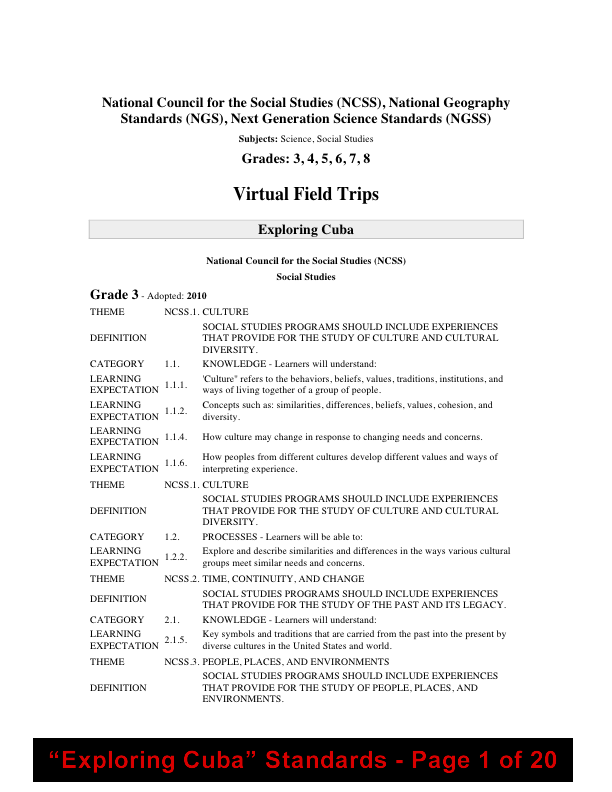
Frequently Asked Questions
Where are the quizzes, quizzes are at the bottom of the full video page..
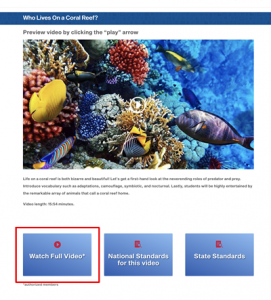
Scroll down to the bottom of the page to the Learning Resources section and you’ll see the quiz file(s).

CAN I SHARE VIDEO LINKS WITH MY STUDENTS?
Yes. As a subscriber, you will find all of your video links on your Account page. You won’t be able to successfully share the URL’s from the video pages on the website. Those URL’s will end up showing an error message because they are behind the login wall.
WHAT MAKES OUR VIDEOS DIFFERENT?
Our videos are researched, written, and produced by educators for educators. Teachers and instructional professionals are responsible for the production of each video and quiz.
Our videos are also different because they are closely aligned with the curriculum. In particular the social studies, geography, life science, and ancient civilization curriculums.
Each video is professionally narrated by voice actors. We hope you’ll agree that not many other “educational” videos can say the same.
ARE SUBSCRIPTIONS FOR A SCHOOL YEAR OR A CALENDAR YEAR?
Subscriptions run for a calendar year. So, if someone subscribes on November 1st then the subscription runs until October 31st of the next year. They are not related to the school year.
WHAT DO I GET WITH MY SUBSCRIPTION?
Each subscription allows for unlimited video viewing and use of the quizzes. In the case of an individual video subscription, that means unlimited viewing of the single video. A Teacher + Classroom subscription allows unlimited access to all videos on the website, as does a Schoolwide site license.
DO YOU HAVE ANY OTHER RESOURCES?
What does teacher + classroom mean.
A Teacher + Classroom subscription means that the videos and video links can be shared by a teacher with all her/his students.
DO I NEED ANY SPECIAL SOFTWARE OR TECHNOLOGY TO WATCH YOUR VIDEOS?
All you need is a device and an internet connection together with the video links, or login information (user name and password). The faster the internet connection, the better.
HOW CAN MY STUDENTS ACCESS THE VIDEOS?
Teachers share their video links with their students. They can be copied into other platforms like Google Classroom. Video links can be found on your Account page (see link in Footer). Page URLs can’t be copied and pasted because they are behind the login wall.
ARE YOUR VIDEOS CLOSED CAPTIONED?
At this moment they are not closed-captioned. We do offer to provide transcripts of a video if that can be of help. It is our intention to have all of our videos closed-captioned as soon as we can, since we appreciate how important this is.
CAN I DOWNLOAD THE VIDEOS?
No, you cannot. The videos are our copyrighted content. Ours is a subscription-based website, which means you have unlimited access as long as the subscription is active.
HOW DO I CANCEL MY SUBSCRIPTION?
You can cancel your account at any time from your Account Page (see link in Footer area). After canceling, you’ll still be able to use your subscription until the expiry date. If it has already renewed you’ll need to contact us to make other arrangements.

Join Our List!
Get our Promo Codes, classroom ideas, latest video news, and more!
Join the thousands of your fellow educators who are already on our list.
You've successfully signed up!
Pin it on pinterest.
Virtual Field Trips
Spark wonder, curiosity, and conversation in your classroom with a virtual field trip! Book one of our FREE interactive programs with a live educator at a date and time most convenient for you. All you need to participate is a computer, webcam, and internet access.
Schedule a 45-60 minute live online presentation for your class or group of students (minimum group size 8 students). Programs can be hosted by our team on Zoom or Google Meet, or we can join on your group's platform.
We ask that teachers/group leaders participate to assist with questions and issues that may arise.
Fill out our Program Request Form to schedule a Virtual Visit for your group. Please submit our program request form at least 3 weeks in advance of the program date! If you have any questions, you can email our School and Public Programs team .
Weather Wow: Up in the Air!
Did you know a typical cumulonimbus cloud can weigh 105.8 MILLION pounds?! How does it stay up in the sky?! Explore how the sun affects our Earth’s weather with an interactive experiment comparing hot and cold air. Transform your students into science sleuths and cloud detectives as we explore this mystery together and learn how air behaves when it changes temperature.
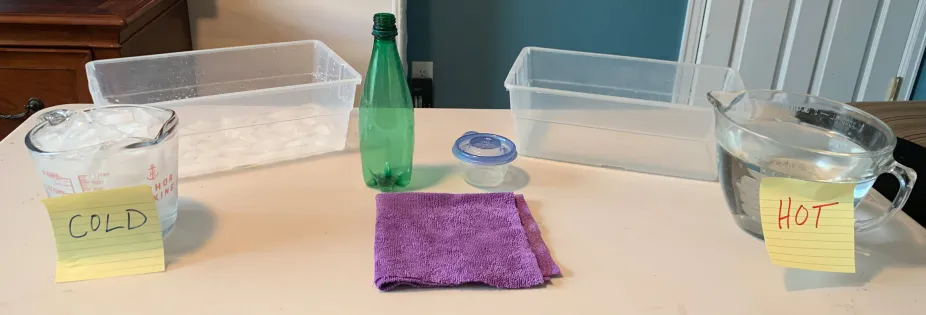
Supplies you'll need to try the activity at home during Let's Compare Warm and Cold Air!
To do the activity along with us, students will need: (all supplies except bottles can be shared in groups)
- A small plastic bottle, like a water or soda bottle
- About a tablespoon of dish soap in a container at least as large as the mouth of the bottle (you'll be turning the bottle upside down & dipping it in the container.)
- Two larger containers (such as bowls or tubs) - big enough to hold the bottom of the bottle with some water
- About 2 inches of cold, ice water in one of the larger containers
- About 2 inches of very hot water in the other larger container (it's best to boil the water just before the program begins, as it will cool a bit before we get to the demo to use it.)
Weather Wow: Hurricane Trackers
A new tropical cyclone has been detected in the Atlantic Ocean! Your class of meteorologists-in-training must work collaboratively in teams to track the developing hurricane and make an emergency preparedness plan for a coastal town. Immerse your students in an exciting, interactive adventure as they explore weather hazards, interpret and communicate incoming weather data, and discuss how to prepare and reduce impacts of the storm.
- Explore NCAR: Live Virtual Tour
Grades 6 - adult
The National Center for Atmospheric Research (NCAR) Mesa Laboratory sits nestled against the foothills of the Rocky Mountains in Boulder, CO. In addition to being an amazing architectural landmark designed by I.M. Pei, this world-class research laboratory focuses on an understanding of Earth system sciences including atmosphere, weather, climate and the Sun, which is the ultimate source of energy for Planet Earth. Explore the NCAR Mesa Laboratory and the importance of Earth systems to our society with a live NCAR guide on this interactive, virtual tour.
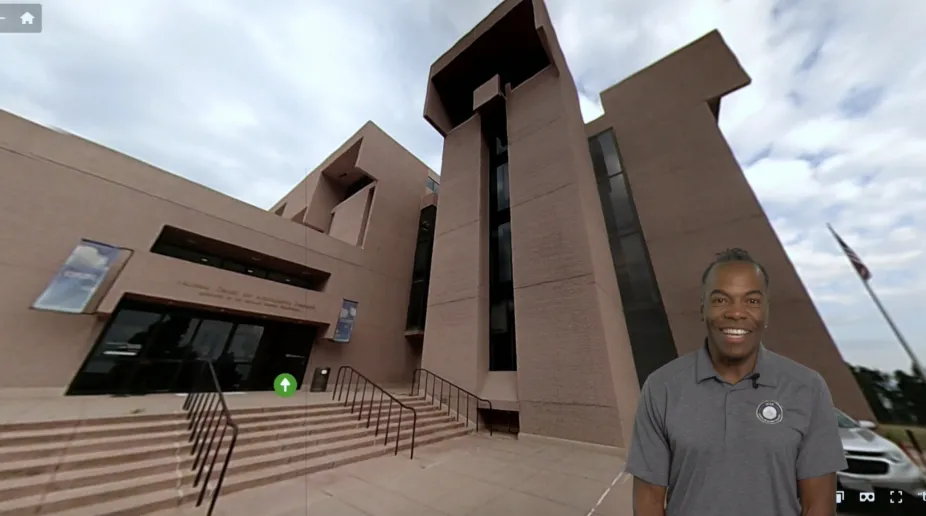
Please contact School and Public Programs Team with any questions about our educational programming and resources.
© 2020 UCAR
- Help K-12 Students Learn About Earth from Home
- The Learning Zone
- SkySci for Kids
Related Links
- Meet the Experts
Engaging Virtual Field Trips for Middle School Science
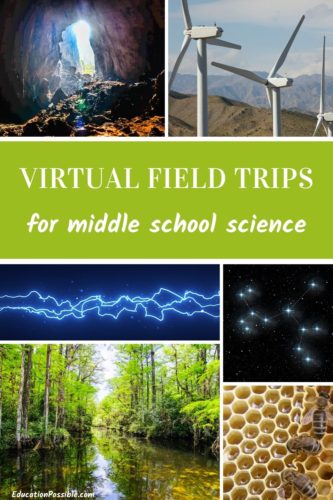
This list of virtual field trips for middle school science is full of interesting online tours you can use while teaching science at home .
The field of science continues to grow, and it’s crucial that older kids study a wide variety of science topics.
That’s why I’ve put together this list of over 20 websites you can use as part of your homeschool science lessons. They include topics in the fields of astronomy, biology, chemistry, and physics.
While this isn’t a complete list of all the science field trips available, there’s plenty to keep your tween busy for a while.

Any links in this post may be affiliate links. See my disclosure statement .
Table of Contents
Science Virtual Field Trips
One reason I love adding online learning like this to my older kids’ lesson plans is because it gives them the chance to get up close and personal with whatever topics they’re studying.
Too often kids get bored with a subject because they don’t think it’s relevant. They can’t see how it pertains to their lives. These virtual tours give students insight into how the theories they’re studying in school are being used by scientists in real life. They show kids the actual application of science.
They all include interactive tools for your tweens and most have downloadable teacher resources for you as well. Use them in conjunction with your science curriculum or replace a lesson or two with the virtual tours found here.
You’ll quickly see that visiting these sites is a great way to get your kids excited about science.
Help tweens reach for the stars as they study astronomy with these online tours.
Johnson Space Center
Does your tween dream about a career in the space industry? Take this inspiring virtual field trip to the Johnson Space Center to explore the next steps of innovation in space history.
They’ll learn about the developments of projects like the next generation spaceship and the deployment of the Space Launch System, while also learning about the amazing Boeing employees working on these projects and their unique career paths.
NASA Glenn Research Center
Kids of all ages are fascinated by astronauts, rockets, and the exploration of space. Now, they can get an inside look at the research center for NASA .
Tweens can choose from several tours from the National Aeronautics and Space Administration to see testing in action. These STEM activities will make it easy to engage your kids in science.
Project Access Mars
The Curiosity Rover traveled 350 million miles and over 8 months to reach Mars . Its primary mission was to determine if life could survive there.
On this website, teens will learn how scientists are using recordings from the rover to make a 3D model of the planet and through webVR technology, they can explore the model themselves.
Take this virtual tour to see what the surface of Mars is like and what scientists have learned about this far away planet.
Stellarium
Is your student an amateur astronomer? Stellarium is an interactive planetarium that will let you see a realistic projection of what is in the night sky from anywhere on Earth.
Use it as part of your science lesson plans or just let your tween explore on their own. They can even make a digital logbook to track what they see in the night sky over time. Download the app so you have it wherever you go.
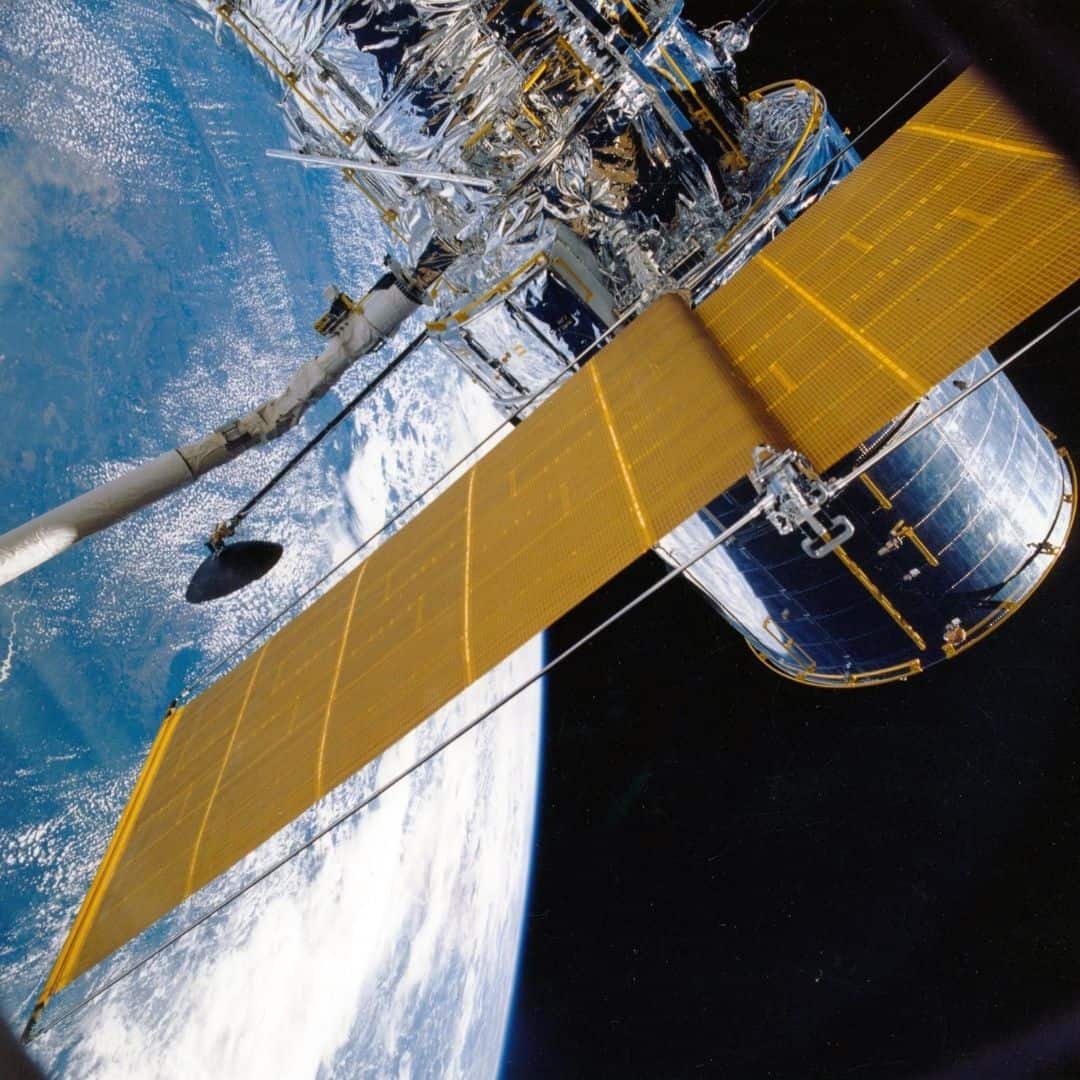
Explore the natural world with some biology field trips.
Arizona State University Ask A Biologist
These biology virtual tours will take your students on a time travel tour through the seasons, teach them about venomous creatures found in the desert, shrink them down to explore inside a beehive, and more.
Don’t miss the “Body Depot” section that is related to human biology and even genetics.
You’ll also find teacher resources, quizzes, and games that you can use in your homeschool.
FS Nature Live
FSNatureLive wants to bring nature to your classroom. Through online education resources, the USDA Forest Service and Prince William Network bring exciting learning opportunities about bats, climate change, butterflies, and more to everyone around the world.
You can register for live events or view previous adventures. Kids can explore nature and will find a free science journal on this site.
Generation Health
In these days, where the discussion of a coronavirus vaccine is the headline of every news channel, your tween will be very interested in learning about how medicines are developed.
In this Generation Health virtual field trip, your tween will learn about medicine, from idea and conception to the pharmacy shelf. It includes an educator guide to help you teach this important subject.
Great Lakes Now
The Great Lakes are the largest freshwater group of lakes by area on the planet. Great Lakes Now offers three virtual field trips targeted at tweens to explore the importance of coastal wetlands, a deep dive experience, and the danger of algal blooms.
They also offer a newsletter and a very informative blog so you can see what’s going on with the lakes throughout the year.
Lib Guides Virtual Field Trips
There are a variety of tours on this page sponsored by the NYC Department of Education .
Take ecology field trips to the coral reefs and Everglades National Park to learn about Burmese Pythons.
Learn about sustainability through virtual field trips to NYC to visit their water supply system, wastewater treatment center, and trash island.
Finish up by visiting Zimbabwe’s Hwange National Park to study wildlife.

National Geographic Son Doong 360
Take a virtual field trip to Phong Nha-Ke Bang National Park in Vietnam to study the world’s largest cave, Hang Son Doong .
The name means “mountain river cave” and this one has an amazing rainforest inside it. It was discovered as recently as 2009, and this project seeks to preserve a digital record of the cave before tourism alters its untouched state.
Nature Conservancy of Oklahoma
With so many people living in urban areas, it makes it difficult for tweens to experience near-pristine natural areas where they can learn about plants, animals and important environmental issues of today.
OK360 wants to bring remote areas of Oklahoma to students so they can experience its natural beauty without leaving the comfort of home.
Project Noah
Tweens with an interest in ecology will happily spend hours exploring the shared online nature journal, Project Noah . Users share photos of nature, create wildlife journals, and help each other identify species.
This is a unique opportunity to explore nature in places you may never be able to visit in person.
Svalbard Global Seed Vault
The Svalbard Global Seed Vault is located on a remote island in Sweden. It’s a cooperative world effort to preserve as many seed varieties as possible in case of a global crisis.
Through this virtual tour, tweens can learn about this fascinating storage facility built into the side of a mountain and the millions of seeds that are located there.
They’ll understand why we need this important vault and why this is the perfect location for ensuring the preservation of one of the world’s most precious resources.
The Nature Lab
Sponsored by The Nature Conservancy, the Nature Lab offers several virtual tours and lesson plans for students. With them, you can learn about nature throughout the world and the efforts this global organization is taking to protect it.
For example, you can travel from South America to China and learn about the rainforest, coral reefs, and renewable energy, all from the comfort of home.
These amazing virtual tours will help your tween see the world from a broader perspective.
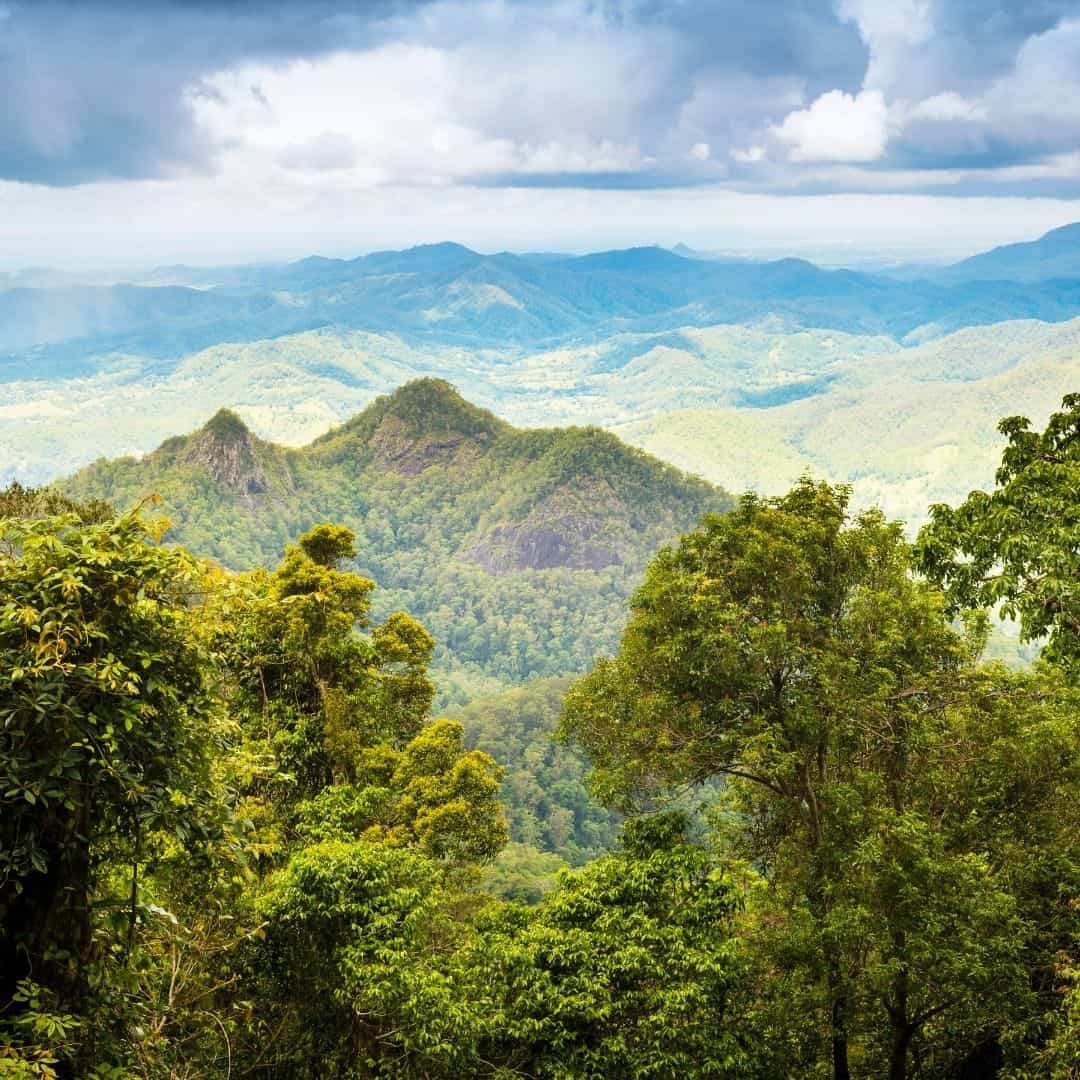
This tour will help your older kids see how chemistry affects their lives.
3M’s Young Scientist Lab
This virtual field trip sponsored by 3M shows how nature inspires the science behind their products. At the Young Scientist Lab , teens will learn how gecko’s feet, goose feathers, spider legs, and fireflies inspire 3M innovations.
Travel to their world headquarters and explore biomimicry and how it’s used to invent products in areas including food science, adhesives, and healthcare.

Spend time learning about energy with these virtual field trips that focus on physics.
Energy101: Electricity Generation
In Energy 101: Electricity Generation , an animated host, “Little Lee Patrick Sullivan,” takes kids from electricity’s source through to the light bulb. He teaches students about thermal power generation, different fuels, the grid, and transmission.
This is an enjoyable way for your family to learn more details about electricity.
JLab Science Education
On this site, you’ll find five virtual field trips from the Department of Energy that give students a peek at what is going in their National Labs .
Young teens can travel down into an atom smasher, learn about 3D imaging of microscopic life, tour a clean room, and see how they use incredibly powerful computers to answer the big questions in life.
NASCAR Hall of Fame
Racing fans will love these activities from NASCAR Hall of Fame . Every week they add new lessons that focus on STE(A)M that will aid students in real-life problem-solving.
The current lesson focuses on types of energy and will show how all branches of science combine in building cars and racing strategy.
Navigating Nuclear
Take a online trip to the Idaho National Laboratory , the top nuclear research facility in the country.
The navigating nuclear tour takes students inside a reactor, introduces them to exciting careers in the field of nuclear science, and teaches them about advances in nuclear capabilities and what they mean for the future.
An educator’s guide is also available.
Powering the Planet
During this Powering the Planet/Nature Works Everywhere virtual field trip, middle schoolers will learn about the power we use in our everyday lives and explore the interesting question, “How can we get the energy we need without harming nature?”
See how scientists are harnessing the power of renewable energy resources, such as sunlight and wind.
The Manhattan Project Electronic Field Trip
Sponsored by the World War II Museum, this Electronic Field Trip takes tweens on a virtual expedition across the country to discover the science and stories behind the creation of the Atomic Bomb.
Student reporters go on a journey of how the atomic bomb was produced in complete secrecy. Learn about how its ultimate results ended World War II and changed the world forever.
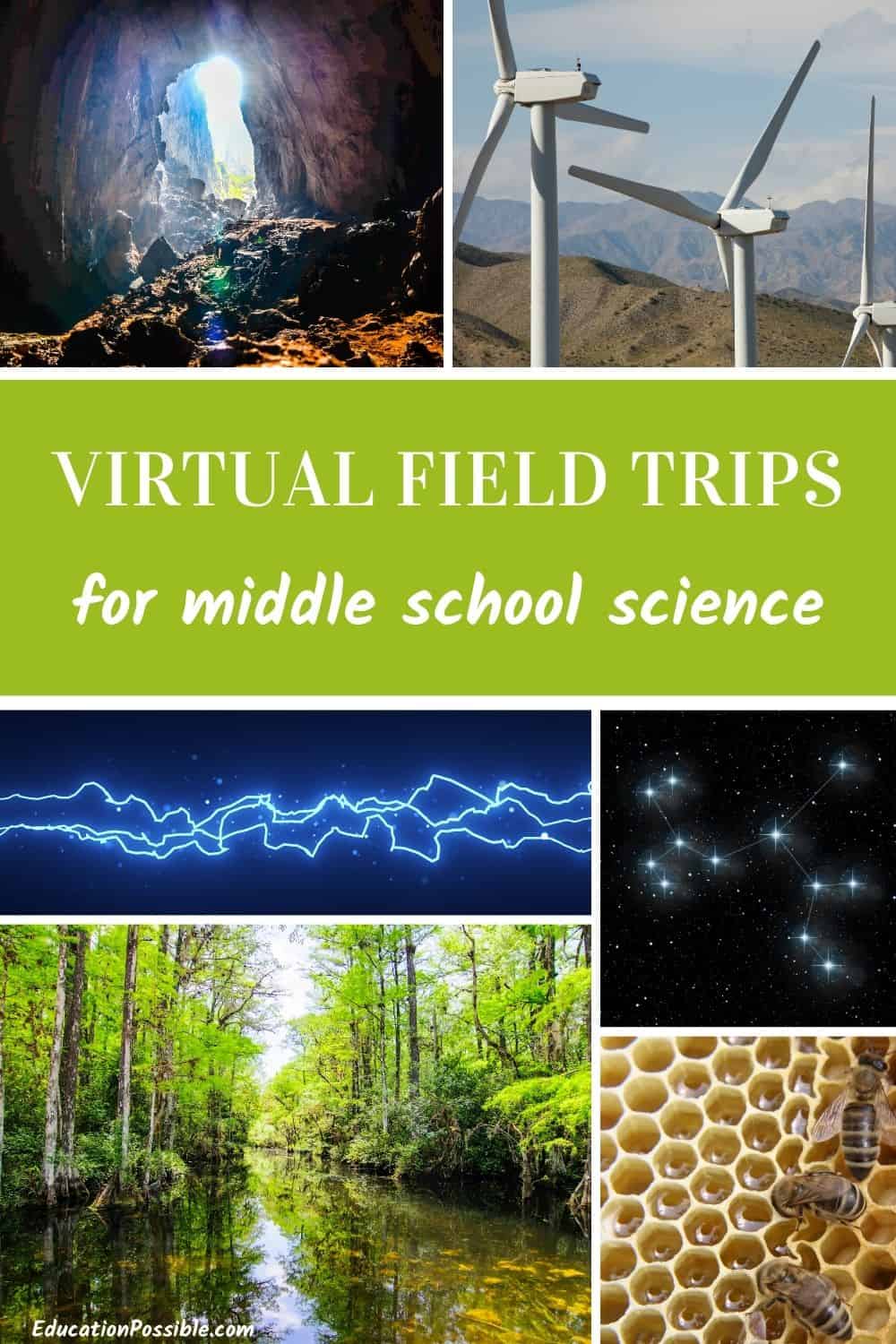
As you can see, there are plenty of fun and interesting virtual field trips you can use in your middle school science lessons. Put the textbook aside for a bit and check some of these out instead.
Resources for Science Virtual Tours
Along with these virtual field trips, add in some hands-on projects like these to help your tweens master various science topics.
- Teach kids more about electricity with the help of a circuit board engineering kit .
- Dissect an owl pellet together to learn more about owls and the food chain.
- This STEM box will help your kids explore the solar system .
- Have fun with these chemistry experiments that you can easily do at home.

Additional Online Trips for Tweens
These are just some of the virtual field trips we’ve taken. You can also:
- Explore Washington DC with this huge list of virtual field trip locations.
- The sole purpose of virtual tours doesn’t have to be education. Have some fun with your tween checking out places like the jelly belly factory, Legoland, and Harry Potter magic.
- Tour the Big Apple with these fun and informative online tours of New York City .
Which one of these virtual field trips for middle school science are you going to choose first?
- Latest Posts

Megan Zechman
@edupossible, latest posts by megan zechman ( see all ).
- Easy Pumpkin Crafts - August 21, 2023
- Middle School Geography Curriculum - August 11, 2023
- Outdoor Geography Activities - August 4, 2023

ChatGPT for Teachers
Trauma-informed practices in schools, teacher well-being, cultivating diversity, equity, & inclusion, integrating technology in the classroom, social-emotional development, covid-19 resources, invest in resilience: summer toolkit, civics & resilience, all toolkits, degree programs, trauma-informed professional development, teacher licensure & certification, how to become - career information, classroom management, instructional design, lifestyle & self-care, online higher ed teaching, current events, virtual science field trips for students.
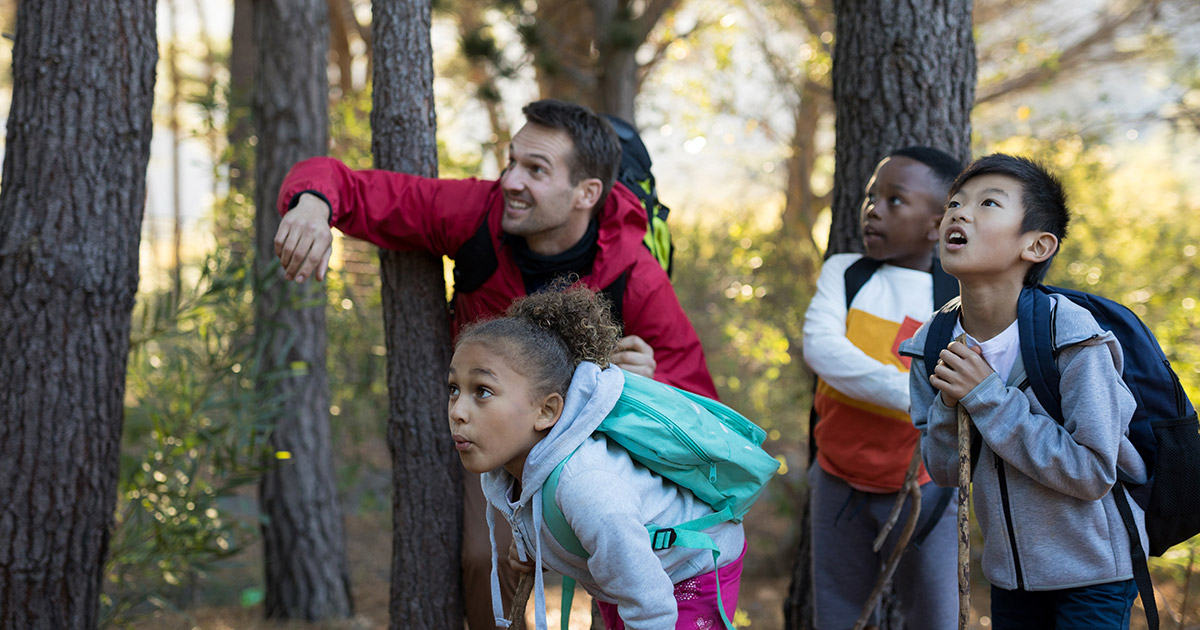
The COVID-19 pandemic poses unique challenges for educators . From ensuring students are safe in classroom settings to adjusting content delivery methods and finding ways for learners to effectively participate — even when they’re socially distant — 2020 is breaking new operational ground in schools across the country.
Despite best efforts by teachers and administrators, frustrations remain around field trips. Given the increased need for space and health security, most schools have taken field trips off the table. This is especially difficult for science educators who often leverage the hands-on nature of in-person activities to spark student interest and create new mental connections.
Technology offers an alternative, providing classes the opportunity to glean substantial value from virtual science experiences. Not sure where to start? Here’s a look at 10 educational websites to help teachers deliver on the potential of socially distant science.
Project Noah
Bird is the word! Also bugs, mammals, plants, fish and reptiles. While it may not be possible to take K-12 classrooms out exploring as in years past, Project Noah offers the opportunity for kids to learn about the vast array of species that populate our world. A combination of citizen wildlife photography paired with critical creature data, Project Noah makes it possible for students to discover the world around them without ever leaving the classroom
New for 2020: Nature School from Project Noah that includes video lessons, interactive activities and related classwork.
Navigating Nuclear
Take a tour of the country’s leading nuclear research facility at the Idaho National Laboratory. Kids get the chance to step inside a nuclear reactor, explore potential STEM careers, and discover how radiation and radioactive isotopes are used to make our world a better place.
UPM Forest Life
UPM Forest Life takes students across international borders to forests of Finland. The site features an interactive map that includes details about forest-dwelling species, information about the current efforts of forestry workers, and how these forests are used responsibly in Finland for recreation. Students and teachers can explore the map at their own pace or discover specific learning opportunities throughout the virtual landscape.
Journey to Mars
The Red Planet has once again captured human interest as NASA looks to the not-so-distant future of a manned mission to Mars. Students can discover how current technologies are helping prepare for the journey, what travel technologies are in development to enable the trip, and where innovation is needed to help the mission crews survive in the Martian environment.
Spark! Online Education
Science happens everywhere — and that includes the NASCAR racetracks. Spark! Online Education features STEAM-driven activities to help students see the real-world applications of science on the speedway. Students can learn about subjects ranging from creating aerodynamic car models, to discovering how energy types impact race outcomes, and understanding the role of sound in NASCAR racing. Start your engines — it’s science time!
IoT: Infinite Possibilities
The Internet of Things is everywhere, but how exactly does it work? More importantly, how can it be used to improve life on Earth? This virtual field trip explores how IoT technology can be used to manage two critical resources — energy and water — and create safe, sustainable communities. Plus, teachers can download the companion Educator Guide to build their own lessons around IoT.
Solar System Scope
How well do you really know the solar system? Most of us can name the eight planets (poor Pluto!) and have a reasonably solid grasp on the structure of our solar neighborhood. The Solar System Scope takes things a step farther with an interactive map of our local cosmic community. Kids can use the map to see where each planet is located relative to the sun, click on it for more information about its surface and internal structure, and see how these planets appear in our night sky.
The National Aquarium
Here fishy, fishy, fishy! The National Aquarium’s virtual tour lets students explore this fantastic aquatic resource from the comfort of their own classrooms. Here students discover more about the diverse sea life that makes our world so unique.
Operation Montserrat
Who wants to go on a mission? That’s the mandate of e-Mission virtual experiences from Wheeling Jesuit University. Classes can apply for interactive undertakings such as responding to the real-life explosion of the Montserrat volcano. Using climate and seismic data, kids and teachers will prepare for their mission over the course of three weeks, then put their skills to the test by attempting to save the residents of Montserrat from this fiery monster.
The Nature Lab
Offered by the Nature Conservatory, the Nature Lab offers a four-week virtual program designed to help students better understand how nature works and how humans can help our planet prosper. Week One focuses on Food and Water Sustainability, Week 2 on Climate Change, Week 3 on Building Healthy Cities, and Week 4 on Protecting Land and Water.
While COVID-19 means classrooms are anything but normal, virtual field trips and digital science experiences can help kids discover the wonder of our world — even at a distance.
You may also like to read
- Virtual Field Trips for Kindergartners and Elementary Students
- Five Exciting Virtual Education Field Trips
- 3 Interactive Virtual Field Trips for Social Studies Students
- Field Trips: Are They Really That Valuable?
- Popular Science Websites for Students
- Virtual Museum Tours for Students
Categorized as: Tips for Teachers and Classroom Resources
Tagged as: STEAM , STEAM - Pillar , STEM
- Early Childhood Education: Resources, Theorie...
- Online & Campus Master's in Early Childhood E...
- STEAM Teaching Resources for Educators | Resi...
National Museum of Natural History Virtual Tours
Access the tours.
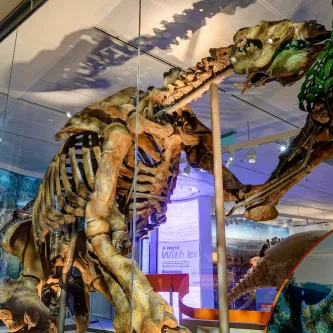
The Smithsonian National Museum of Natural History virtual tours allow visitors to take self-guided, room-by-room tours of select exhibits and areas within the museum from their desktop or mobile device. Visitors can also access select collections and research areas at our satellite support and research stations as well as past exhibits no longer on display.
Virtual Tour Tips
- To navigate between adjoining rooms in the tours, click on the blue arrow links on the floor or use the navigation map in the upper right of the presentation screen.
- Look for the camera icon which gives you a close-up view of a particular object or exhibit panel.
- Try zooming in as some of the images are stitched together from individual pictures in order to create very high resolution gigapixel images.
Please note: This tour and these presentations have been tested and should work on all common devices, browsers, and operating systems (using a desktop computer with Windows, Mac, Linux or a mobile device such as an iPhone, iPad, or Android). Functionality and appearance may vary as it will adjust automatically to accommodate the most visitors. While the virtual tour has no advertising, ad blocking software or browser settings that block JavaScript and/or XML may interfere with the functionality of the virtual tour. Please let us know what you think of the tour and how the experience can be improved. Send your feedback to the NMNH Web Team .
Site Credit: Imagery and coding by Loren Ybarrondo
Equipment Used: Professional Nikon digital single-lens reflex (DSLR) camera bodies and lenses. The photography is typically done using rectilinear lenses with minimized distortion and shooting equirectangular panoramas at 22K pixels on the long side.
Software Used: No authoring software is used. The tours are hand-coded in HTML5 and JavaScript using the krpano graphics library.
- Smithsonian Institution
- Terms of Use
- Privacy Policy
- Host an Event
- Grades 6-12
- School Leaders
NEW: Classroom Clean-Up/Set-Up Email Course! 🧽
55+ Best Social Studies Websites for the Classroom
Don’t you love it when other teachers do the research for us?

Social studies takes a look at the different branches of human society, and as we’ve navigated this global pandemic, we’ve watched a major moment in history unfold. Why not use this opportunity to push our kids and students to explore humanity? Whether you’re teaching online or in-person, this list of the best social studies websites will help you create lessons that are informative, fun, and interactive. We’ve categorized over 55 of the best social studies websites as follows:
Social Studies Lessons
- Virtual Museum Tours
Virtual Field Trips
- Games and Simulations
American Panorama
This historical atlas of the United States combines cutting-edge research with innovative interactive mapping techniques.
American Social History Project
This resource challenges traditional ways of learning about the past by exploring the diverse social and cultural histories of the United States. The site also offers professional development seminars for teachers.
Big History Project
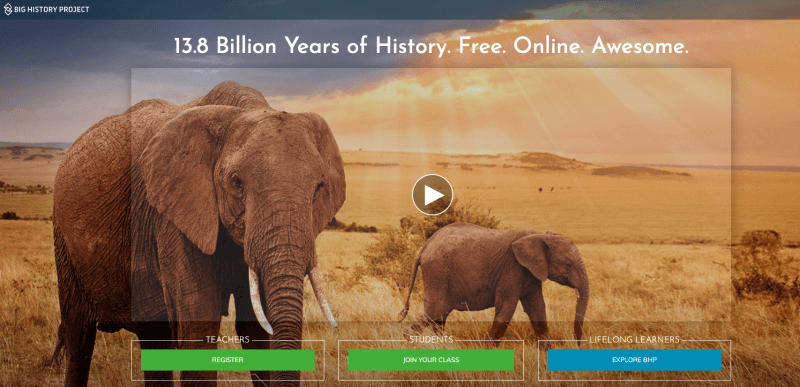
Focused on high school students, the Big History Project is a joint effort between teachers, scholars, scientists, and their supporters to bring a multi-disciplinary approach to knowledge.
[contextly_auto_sidebar]
Crash Course World History
This fantastic YouTube channel provides an engaging glimpse into some of the most notable events and developments in history. With sequences of videos on the World Wars, the history of science, U.S. History, and more, it’s a great first introduction or review.
Crash Course Kids
The creators of Crash Course have also created a second channel geared towards younger students. This biweekly show is meant for elementary school kids and covers topics ranging from Earth science to chemical reactions.
EdTechTeacher
Need a list of some great history websites? EdTechTeacher has done the hard work and compiled them all for you!
The Gilder Lehrman Institute of American History
A nonprofit organization that has developed an array of programs for schools, teachers, and students that now operate in all fifty states, including a website that features more than 60,000 unique historical documents.
The Idea of America
At its heart, America is an idea. What keeps this idea vibrant? The Idea of America is a digital U.S. history program that presents our nation’s rich history through an original framework that views America as an enduring “Great Debate.”
Inquiry Journeys
A free inquiry-based distance learning curriculum created by inquirED. The 20-minute social studies lessons can be done at home and address questions like How can I capture where I am in time and place? , How can we communicate with others to share our thoughts and ideas? , and How can we celebrate our everyday heroes? . New inquiries are being released weekly.
Library of Congress
It’s hard to beat the National Library of Congress. It’s one of the best social studies websites and even features an entire portal just for teachers.
National Archives
Use the online tool to access countless primary source documents to enhance learning. Find lesson plans and more on the Educator Resources page.
Rozzy Learning
This colorful site contains lessons that meet national and state standards as well as STEM and College and Career Readiness goals. They’ve even got lessons on coronaviruses!
Smithsonian’s History Explorer
Developed by the National Museum of American History, Smithsonian’s History Explorer is designed for K-12 teachers and students and offers hundreds of free, innovative online resources for teaching and learning American history.
Stanford History Education Group
The Reading Like a Historian curriculum promotes historical inquiry while engaging students. The lessons are designed to explore a central historical question and include a set of primary documents for students of various reading skills.
Studies Weekly Online
It’s easy to see why we’ve included this on our list of the best social studies websites. Studies Weekly Online allows you to create a customized, standards-based curriculum for social studies and offers a free trial.
TCI offers the full package! You’ll find resources to help you better prepare, present, assign, grade, and teach—even through distance learning!
Teaching American History
The Ashbrook Center at Ashland University worked with the National Endowment for the Humanities to develop web-based lesson plans for U.S. history and American government teachers.
Teaching History
This site is designed to help K–12 history teachers access resources and materials to improve U.S. history education in the classroom and through distance learning.
Teaching Tolerance
Teaching Tolerance is dedicated to reducing prejudice, improving intergroup relations, and supporting equitable school experiences for our nation’s children. There is even a special module specifically designed for the racism surrounding the coronavirus pandemic.
Utah Education Network
This interactive site is designed for 3-6 grade students and includes lessons on geography, environment, U.S. history, and U.S. government.
Voices of Democracy
On this site, you will find scholarly articles offering critical analyses of significant speeches, curriculum units designed for undergraduate teachers and students, lesson plans for high school and middle school teachers, and a blog with brief commentaries on speeches and pedagogical issues.
World History Matters
A portal to world history websites including Women in World History, World History Sources, and more.
World History Project
This infinitely adaptable, free standards-aligned world history course for high school students connects to the past to the present, with an eye to the future.
Museum Tours
Art institute of chicago.
Enjoy virtual visits to the galleries, go behind the scenes, and engage with art from anywhere with our virtual events, videos, and themed audio tours.
Boston Children’s Museum
Explore three floors of the Boston Children’s Museum on this virtual tour which includes fun stops at the Explore-a-Saurus and Japanese House exhibits.
British Museum, London
Located in the heart of London, students can explore this iconic museum with exhibits dedicated to everything from Egyptian mummies to the Rosetta Stone and Egyptian mummies.
Detroit Institute of Arts
Explore the “ At Home With DIA ” museum experience at the Detroit Institute of Arts that offers virtual field trips, online exhibits, weekly film screenings, and more.
Guggenheim Museum, New York
This is definitely one of the best social studies websites around! Use Google’s Street View feature to tour the world-famous Guggenheim museum, including works of art and the breathtaking spiral staircase.
J. Paul Getty Museum, Los Angeles
The Street View tour of this California museum gives students access to European artworks that date back as far as the 8th Century.
Musée d’Orsay, Paris
Travel to Paris might be out of the question right now, but students can virtually walk through this gallery which includes works from Monet, Cézanne, Gauguin, and more.
National Gallery of Art, Washington, D.C.
Scope out two incredible online exhibits through Google: one dedicated to American fashion and another featuring a collection of works from Dutch Baroque painter Johannes Vermeer.
National Museum of Anthropology, Mexico City
Dig into the archaeology and history of Mexico’s pre-Hispanic heritage with a virtual tour of 23 exhibit rooms , including artifacts from the Mayan civilization.
National Museum of Modern and Contemporary Art, Seoul
South Korea might be on the other side of the Pacific, but you can still visit one of the country’s most popular museums through this extensive virtual tour of Contemporary art from Korea and more.
Pergamon Museum, Berlin
This historical museum in Germany provides a virtual glimpse of ancient artifacts, including the Ishtar Gate of Babylon and the Pergamon Altar.
Rijksmuseum, Amsterdam
Explore the masterworks from the Dutch Golden Age, including works from Vermeer and Rembrandt. Google offers a Street View tour of this iconic museum, so you can feel as if you’re actually wandering its halls.
Van Gogh Museum, Amsterdam
Vincent Van Gogh is one of the most iconic painters of all time, and this virtual tour allows visitors to marvel at the largest collection of his artwork.
Discovery Education Virtual Field Trips
Go beyond the classroom walls and explore some of the world’s most iconic destinations—no permission slips required.
Elkhorn Slough
Explore a variety of remote learning opportunities for students, including virtual field trips (Elkhorn Slough) , science challenges , walkabouts , and more. The site also offers a teacher resource library .
The Great Lakes
Embark on a virtual field trip that covers three main components: coastal wetlands, algae, and lake sturgeon. The videos are short and targeted at middle schoolers.
The Great Wall of China
Even through a virtual tour on a tiny screen, students will be dazzled by the magnificence and wonder of this thousands-year-old fortification system.
Metropolitan Museum of Art
There’s so much to see at this iconic New York museum—even on a virtual tour. From couture ball gowns to a history of music, students will be captivated by the 26 online galleries.
Nature Works Everywhere
These wonderful virtual field trips allow students to explore a coastal rain forest or the coral reefs in the Dominican Republic, and so much more.
San Diego Zoo
Check out the fantastic behind-the-scenes videos and stories. Then, be sure to check out the great list of activities and downloadables.
Seattle Aquarium
The Seattle Aquarium hosts a 30-minute virtual field trip. Students can learn about the animals and the food web that can be found in the Puget Sound waters.
This incredibly cool and responsive website allows students to explore more than 60,000 stars, watch sunrises, search for planets, and more!
The Smithsonian
These self-guided virtual tours give students an up-close look at permanent, current, and past exhibits.
U.S. Census Bureau
This site details the Census Bureau’s plans used to engage, educate, and ultimately count an increasingly diverse and growing population.
Perfect for K-8 social studies students, this site includes curriculum content, online learning videos, and quizzes along with a list of the corresponding national and state Standards.
Yellowstone National Park
The best way to experience Yellowstone is to visit. The second best way is to explore the cool interactive maps and, of course, the live stream of the Old Faithful Geyser eruptions.
Social Studies Games and Simulations
Classroom law project.
Dive into engaging civics and law-related education programs. Students of all grade levels can learn more about the values and skills essential to being a responsible citizen.
Kids Discover Online
Choose articles based on reading level, so you can use these articles for various ages and skillsets. Schools and districts closed due to the outbreak can request free unlimited access to Kids Discover Online.
Hippocampus
This free, core academic website delivers videos, animations, and simulations for middle-school and high-school students.
Horrible Histories BBC
This pick for best social studies websites allows students to “watch episodes, play games, and sing along to your favorite Horrible Histories songs!”
iCivics provides tools to help students learn about civic life. Teachers and students can access printable lesson plans, interactive digital tools, and award-winning games.
National Constitution Center
Established by Congress, this interactive website provides free online resources for remote students of all ages who are learning more about the Constitution.
Want more online resource suggestions? Be sure to subscribe to our newsletter so you can get our latest picks.
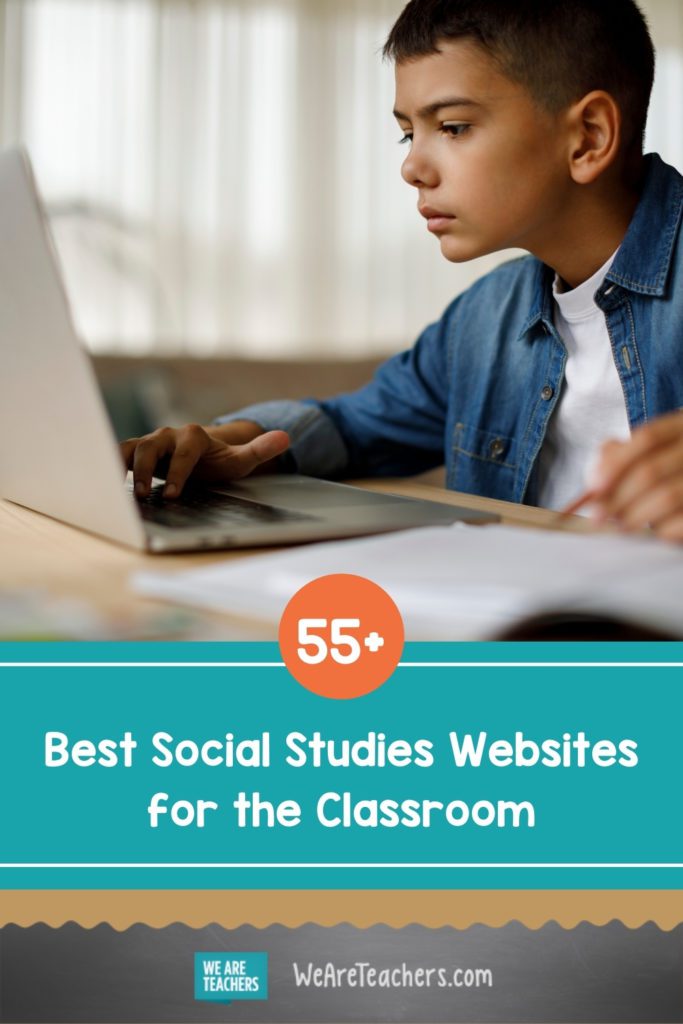
You Might Also Like
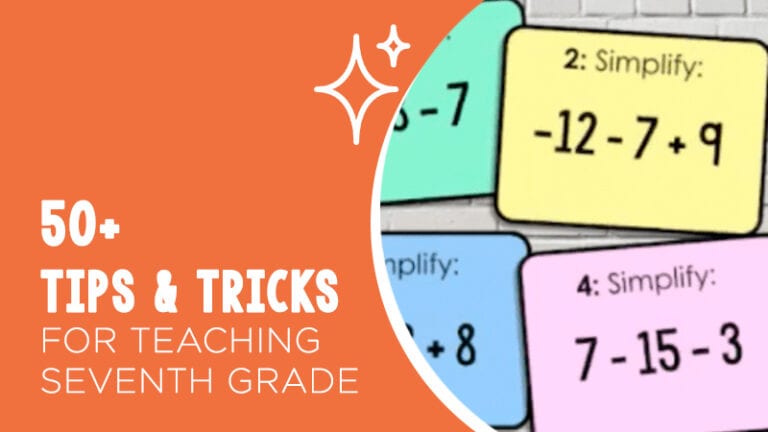
50 Ideas, Tricks, and Tips for Teaching 7th Grade
Brilliant ideas from brilliant teachers (like you). Continue Reading
Copyright © 2024. All rights reserved. 5335 Gate Parkway, Jacksonville, FL 32256

IMAGES
VIDEO
COMMENTS
Free On-Demand Video Field Trips. English and Spanish. 15-20-min. segmented episodes driven by a question of the day. No prep necessary! Functional in any learning environment. Visit the California Science Center and meet our staff virtually. High-quality, grade-appropriate, engaging! Browse by grade level.
Watch these 45-minute videos with your class—any time! They're perfect for grades 3-8, and each includes a teacher's guide packed with discussion questions and more. Check them out below. 1. The Deserts and Grasslands of Africa. Head to Africa with scientist Charles Oluchina, where you'll discover the importance of grasslands and ...
Explore the World with Virtual Field Trips. Designed for ages 9-15 but customizable for all ages, virtual field trips allow students to travel the world and explore natural environments without leaving the classroom. Each virtual field trip contains a video, teacher guide and student activities.
Explore science-related virtual field trips to the Galapagos, Carlsbad Caverns, the solar system, and more. Find videos, webcams, and teacher guides from various sources and locations.
Take a visit to the National WWII Museum for "a cross-country virtual expedition to discover the science, sites, and stories of the creation of the atomic bomb." Don't forget to download the classroom guide! 22. The White House. For a look inside the iconic building, check out the 360° tour of some of the most historic rooms of the People's House, from the Situation Room to the Oval ...
Dramatic glacier-covered rugged mountains, a temperate rainforest, craggy rock-towered coastlines, giant sand dunes, ancient cliff dwellings, and steep sheer rock canyons. All of these landscapes, their history, and more are explored in this tour of the National Parks of the northern part of the Western region. Video length: 27:05 minutes.
Featured and Upcoming Virtual Field Trips. Join us for our Virtual Field Trips or watch them on-demand after their premieres. Each no-cost Virtual Field Trip comes with a companion guide packed with standards-aligned, hands-on learning activities! Select one of the options below to register.
Explore science topics such as weather, plants, sound, landforms, fossils, and more with interactive virtual programs and activity kits. Suitable for remote or in-person learning, these field trips align with state standards and are fun for kids of all ages.
They are convenient, cheap and easy ways to travel with students and kids and offer learning opportunities similar to an actual field trip. Travel the world with these 60 Educational & Fun Free Virtual field trips for students. 1. The Zoo; 2. National Parks; 3.
Interactive Multimedia. Whether you are exploring Mars, investigating the extinction of the dinosaurs or are curious about the origins of life on Earth, Infiniscope's virtual field trips bring the wonder of Earth and space science to you. Try the different field trips and interactive games to learn more about Earth and space.
Virtual field trip sites. 1. Project Noah. A free resource for wildlife identification. Users create wildlife journals by sharing photos from nature and identifying species. Students may create ...
3. Internet of Things: Infinite Possibilities Virtual Field Trip: The Internet of Things refers to a collection of computing devices - such as smart speakers, thermostats and sensors -which are connected to a network to allow for an improved real-time data to better manage two of the most critical resources to humanity: energy and water.
Themed experiences for grades 3-12! Monthly in-person and virtual field trip events for middle and high school. Our popular Science on the Road assemblies can be delivered in-person or virtually. Join the maker movement with virtual classes from BNY Mellon Fab Lab Carnegie Science Center! Expand on your curriculum with hands-on, minds-on ...
Inspire your 5th grade scientists to think deeply about how matter and energy move within food webs as they explore unique ecosystems and organisms on this virtual field trip to the California Science Center. Students will use models and experiment with sprouts to develop an understanding that plants get the materials they need for growth ...
The list of free virtual field trip resources here is adapted from my ISTE Live presentation in December 2020. Students can access these resources without logging into a new website—teachers can post the link to a 360 degree panoramic image or interactive experience in a platform students already use, making it easy for them to access in both traditional classroom settings and at home.
Find a virtual field trip or activity for your class! Getting Started with Virtual Field Trips. 1. Hidden World of National Parks. 2. Stages Around the World 360 Tour. 3. Hall of North American Mammals. 4.
As you know, the world is at your fingertips when you share virtual field trips with your students. Join our community of educators as we share creative ways to use virtual field trips in your classroom. Whether you are teaching virtually, face-to-face, or a hybrid of both, we are here to support you! Head on over to join today!
Virtual Field Trips allow students of all ages to observe Museum exhibits up-close and complete an activity in order to gain scientific understandings. Virtual Field Trips are: Customizable: You can do a virtual hall tour with a student worksheet that is designed to span about one class period, or you can assign additional activities to extend ...
Virtual Field Trips. Spark wonder, curiosity, and conversation in your classroom with a virtual field trip! Book one of our FREE interactive programs with a live educator at a date and time most convenient for you. All you need to participate is a computer, webcam, and internet access. Schedule a 45-60 minute live online presentation for your ...
Along with these virtual field trips, add in some hands-on projects like these to help your tweens master various science topics. Teach kids more about electricity with the help of a circuit board engineering kit. Dissect an owl pellet together to learn more about owls and the food chain. This STEM box will help your kids explore the solar system.
Virtual Science Field Trips for Students. The COVID-19 pandemic poses unique challenges for educators. From ensuring students are safe in classroom settings to adjusting content delivery methods and finding ways for learners to effectively participate — even when they're socially distant — 2020 is breaking new operational ground in ...
Ready to start planning your field trip or virtual program? Give us a call at 412.237.3400! Our team is available Monday-Friday from 9 am-5 pm to help you book the program that best fits your goals and schedule. Learn more about the out-of-this-world in-person field trips at Carnegie Science Center.
Programs are delivered virtually to students by our team of accredited educators. Space Foundation Discovery Center takes advantage of extraordinary teaching tools to deliver our virtual field trip programs, including Science On a Sphere® and our programmable robots used in a simulated Martian environment. The interactive virtual field trips ...
Narrated Tours. The Smithsonian National Museum of Natural History virtual tours allow visitors to take self-guided, room-by-room tours of select exhibits and areas within the museum from their desktop or mobile device. Visitors can also access select collections and research areas at our satellite support and research stations as well as past ...
Virtual Field Trips Discovery Education Virtual Field Trips. Go beyond the classroom walls and explore some of the world's most iconic destinations—no permission slips required. Elkhorn Slough. Explore a variety of remote learning opportunities for students, including virtual field trips (Elkhorn Slough), science challenges, walkabouts, and